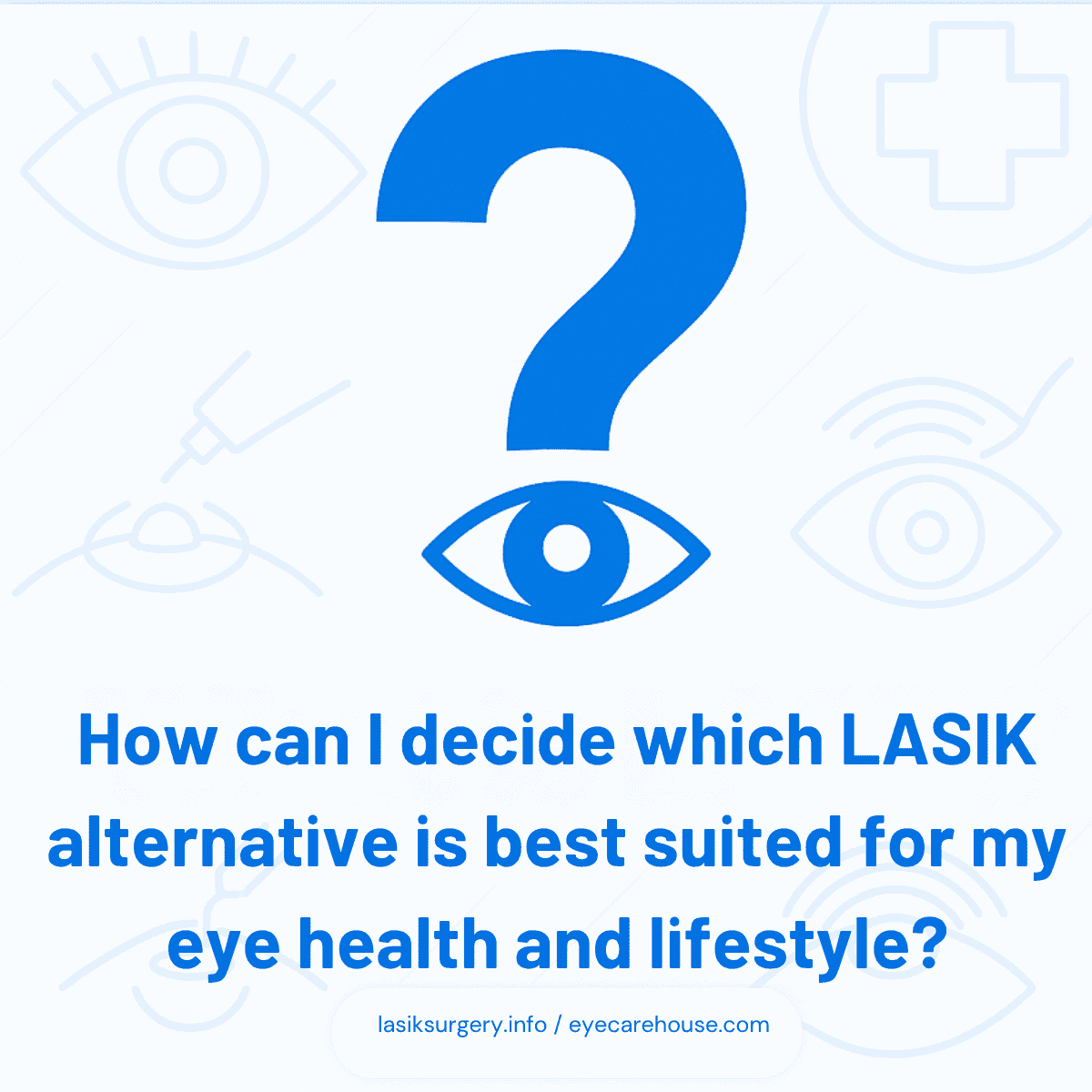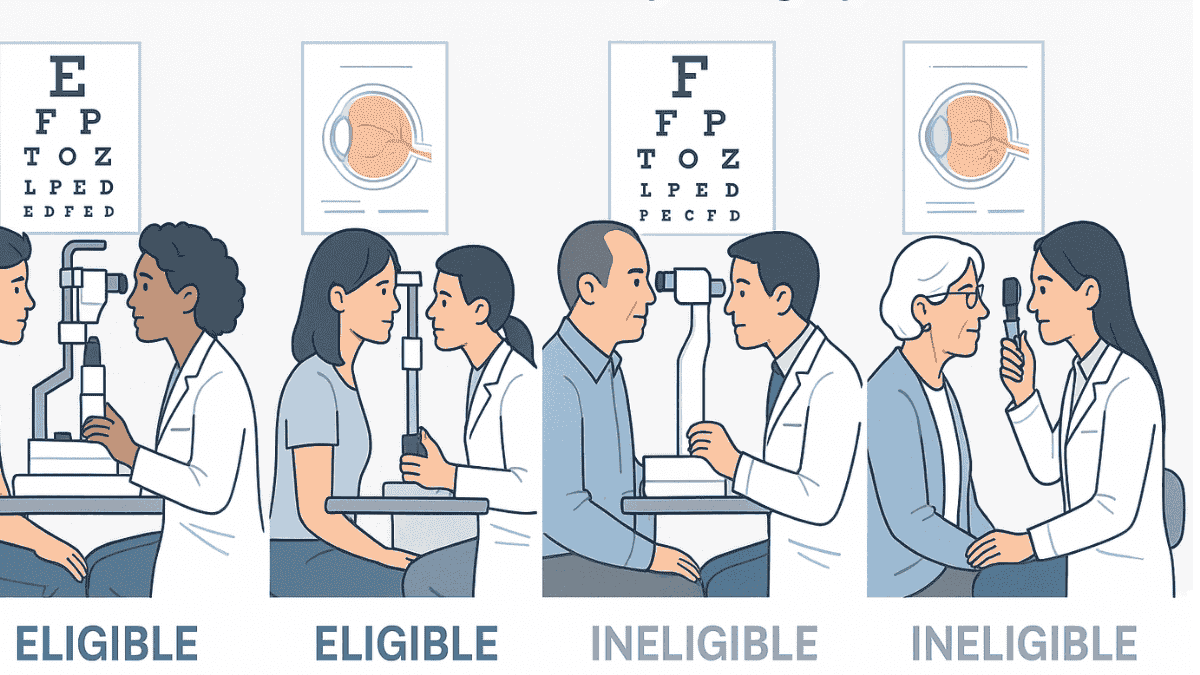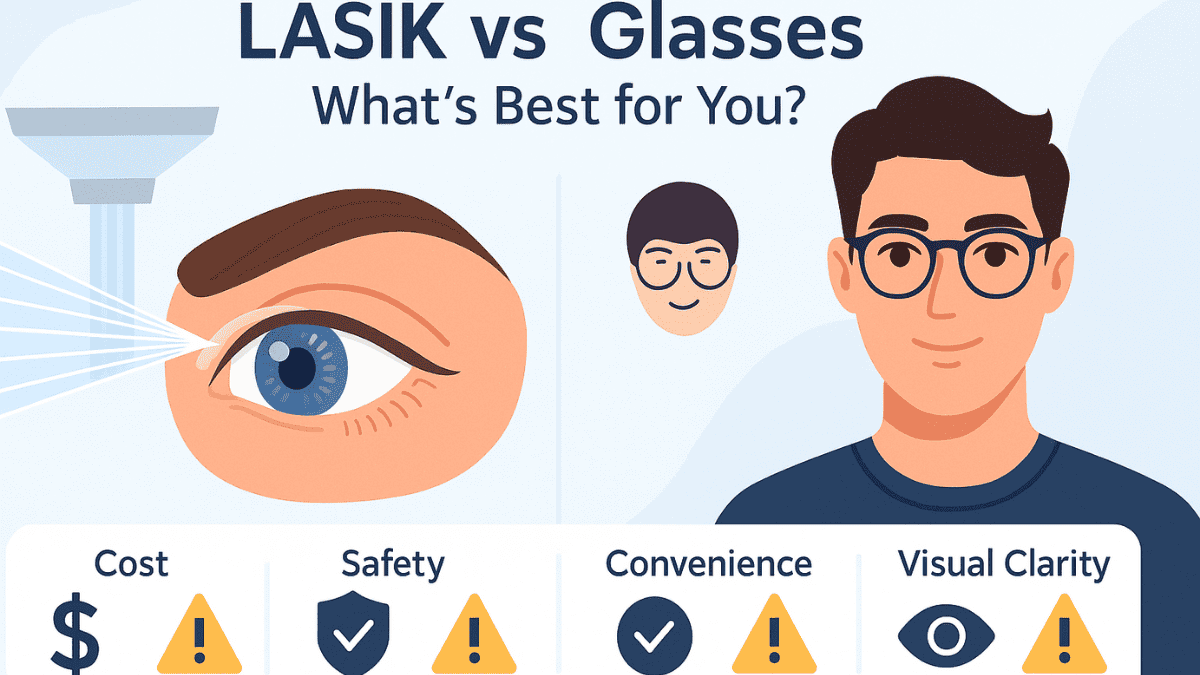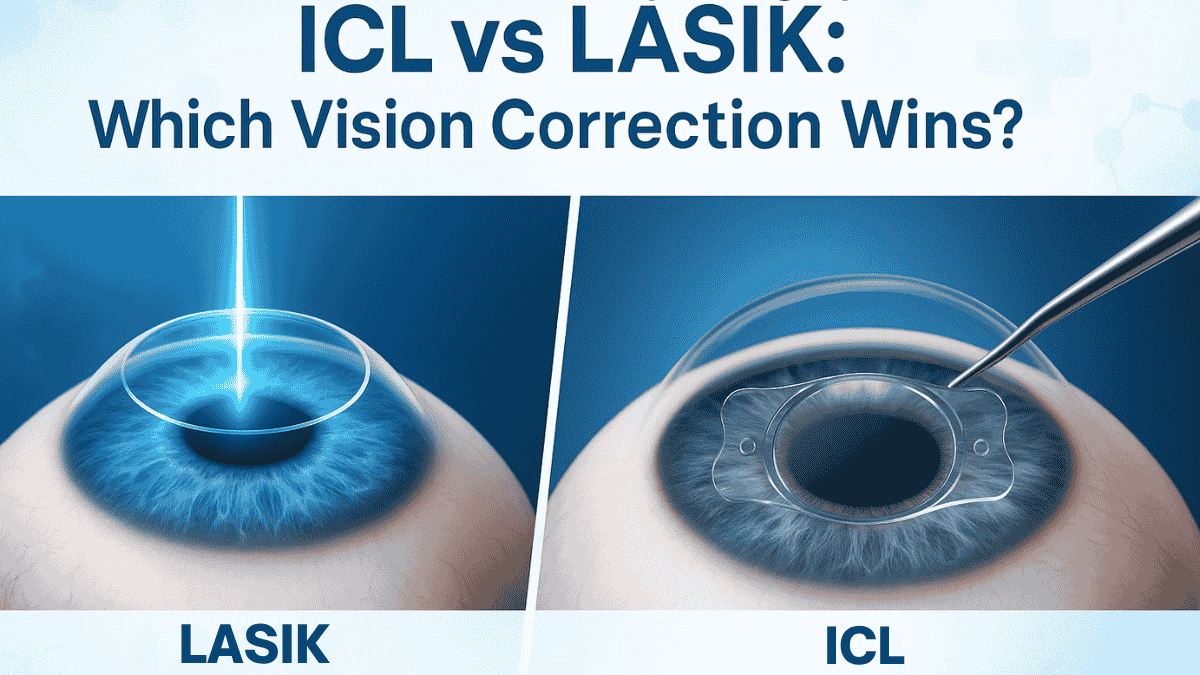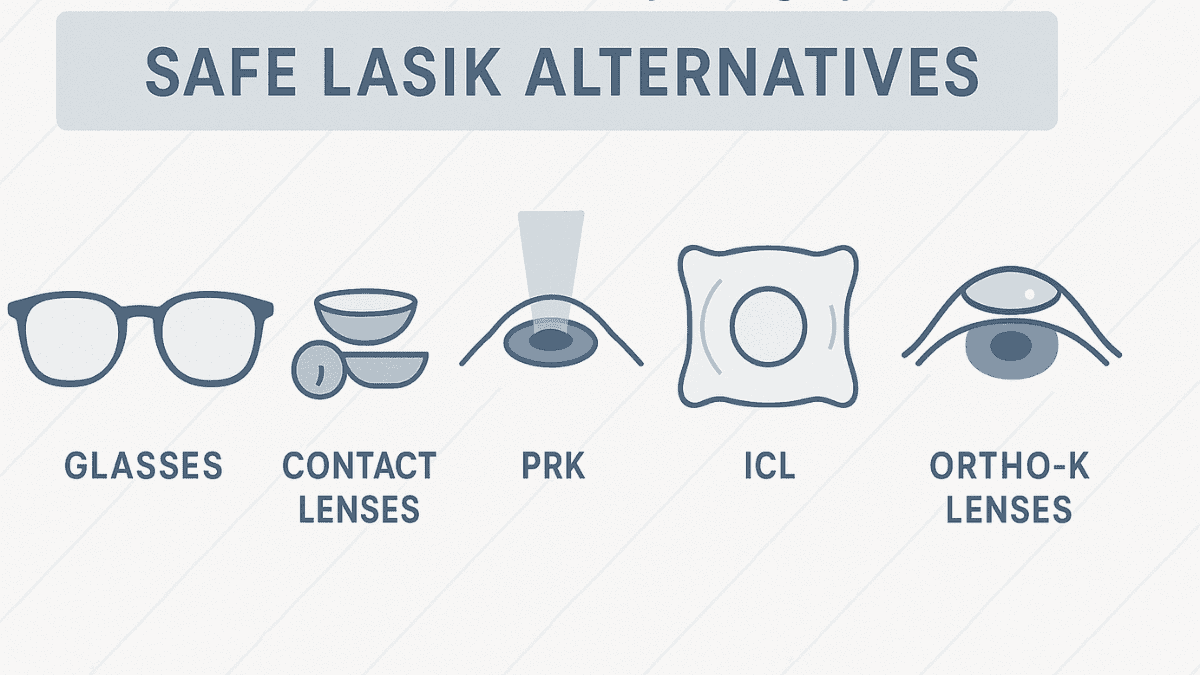
Vision correction has come a long way, offering options far beyond traditional glasses and contact lenses. While LASIK is often the first procedure that comes to mind, it isn’t the right fit for everyone.
Whether due to corneal thickness, dry eye concerns, or simply personal preference, many individuals seek safe and effective alternatives.
At LasikSurgery.info, we provide medically reviewed, easy-to-understand resources to help you explore these alternatives confidently. This guide walks you through the most common surgical and non-surgical LASIK alternatives, so you can better understand your options and discuss them with your eye care provider.
Table of Contents
Understanding Why You Might Need LASIK Options
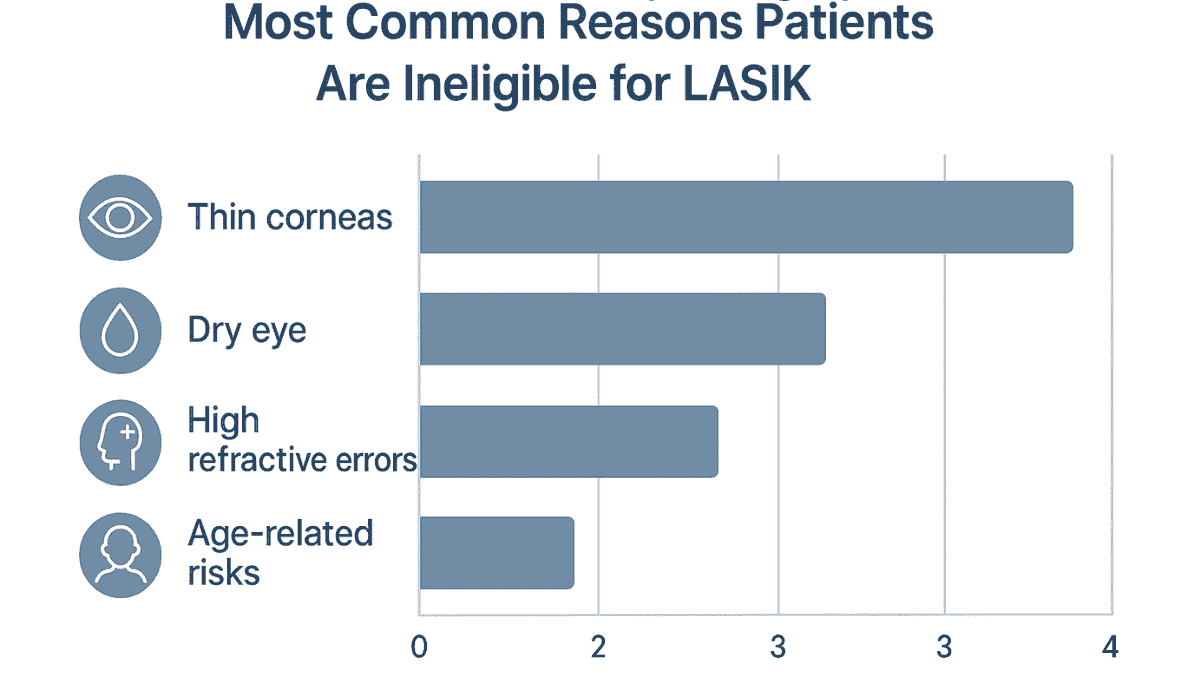
LASIK, Laser-Assisted In Situ Keratomileusis, is a well-known type of laser vision correction. This refractive surgery reshapes the cornea, the clear front surface of your eye. This reshaping allows light to focus accurately on the retina, leading to improved vision for many who undergo LASIK surgery.
Information about what LASIK involves is available from sources like the U.S. Food and Drug Administration. However, LASIK eye surgery is not suitable for everyone. Your eye doctor might determine you are not a good LASIK candidate.
Reasons can include thin corneas, significant dry eye symptoms, or certain high refractive errors that are difficult to address with this specific laser eye surgery. Eye conditions, overall eye health, or your age can also influence candidacy for this vision correction procedure. Some people may simply prefer other LASIK alternatives with different profiles regarding invasiveness or reversibility.
Understanding why LASIK might not be the recommended correction procedure for you is a crucial step. This knowledge allows you and your eye care professional to find the most suitable solution for your vision goals. Now, let’s examine some of the effective LASIK alternatives available for patients seeking clearer sight. If you’re not sure what LASIK surgery involves, review our complete guide to LASIK surgery risks, costs, and benefits to better understand what it offers—and why some patients seek alternatives.
Related Article
LASIK Eye SurgeryExternal Source: FDA
LASIK Eye Surgery – American Academy of OphthalmologyTop Surgical LASIK Alternatives to Consider
If you are open to surgery but LASIK is off the table, don’t worry. There are other advanced procedures available. These can also give you excellent vision, and many have a high success rate.
Each has its own benefits and considerations. An informed decision involves weighing these carefully.
Photorefractive Keratectomy (PRK)
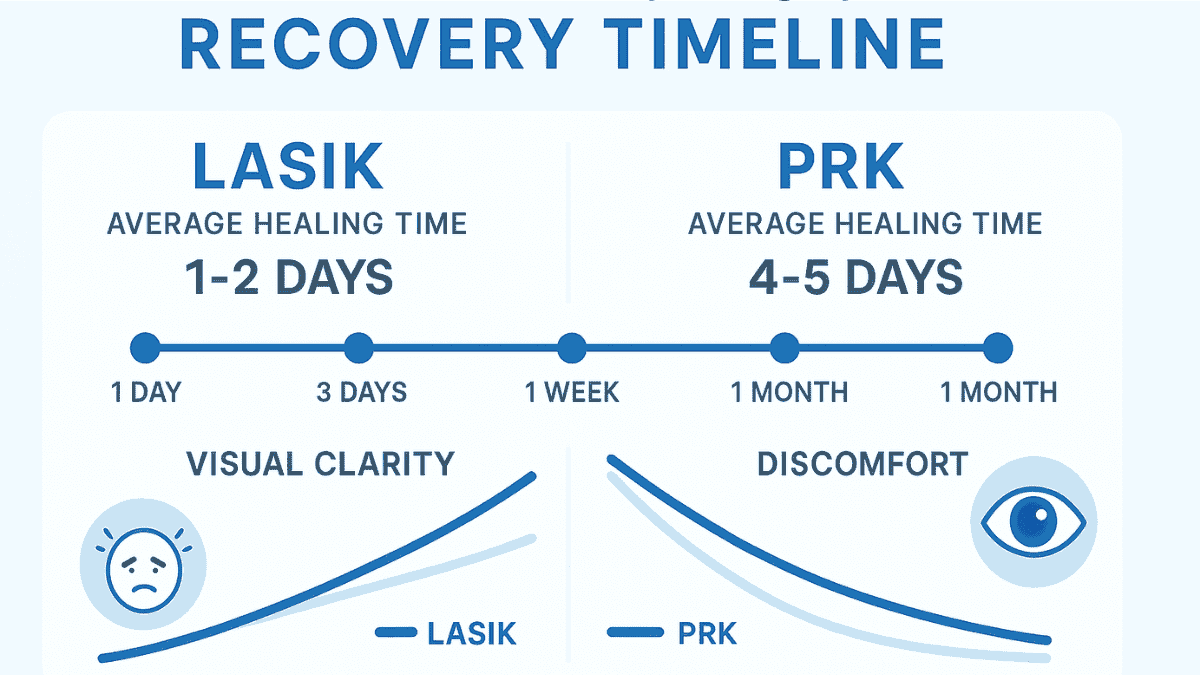
Photorefractive Keratectomy, or PRK surgery, was actually the first type of laser eye surgery, predating LASIK. With PRK, the eye surgeon removes the outermost layer of the cornea, known as the corneal epithelium. Then, an excimer laser carefully reshapes the underlying corneal tissue.
The corneal epithelium regenerates naturally over several days following the PRK surgery. This process is part of the eye’s natural healing. Recovery can take a bit longer than other laser eye procedures.
PRK is often an excellent choice for individuals with thin corneas, a condition that might make them unsuitable for LASIK. It’s also favored by people with very active lifestyles or those in professions where flap-related issues could be a concern, like athletes or military personnel. This is because photorefractive keratectomy does not create a corneal flap.
This eliminates the risk of flap complications, which can be a significant factor for some patients considering laser eye surgery. You can obtain more detailed information from the American Academy of Ophthalmology regarding PRK surgery. Ideal candidates for PRK will be discussed by your eye doctor.
The recovery time for PRK surgery is typically longer when compared to LASIK eye surgery, often involving a longer recovery period for clear vision to stabilize. Patients might experience more discomfort during the initial healing phase. However, the long-term visual outcomes of photorefractive keratectomy are very comparable to those of LASIK, with a high success rate, and many achieve 20/20 vision or very close.
A potential risk with PRK, though less common with modern techniques, is corneal haze; your eye doctor will discuss this and other potential risks. Discuss with your doctor whether PRK surgery is a suitable path for your eye care needs and specific refractive error. This eye surgery procedure has a strong track record.
LASEK (Laser Epithelial Keratomileusis)
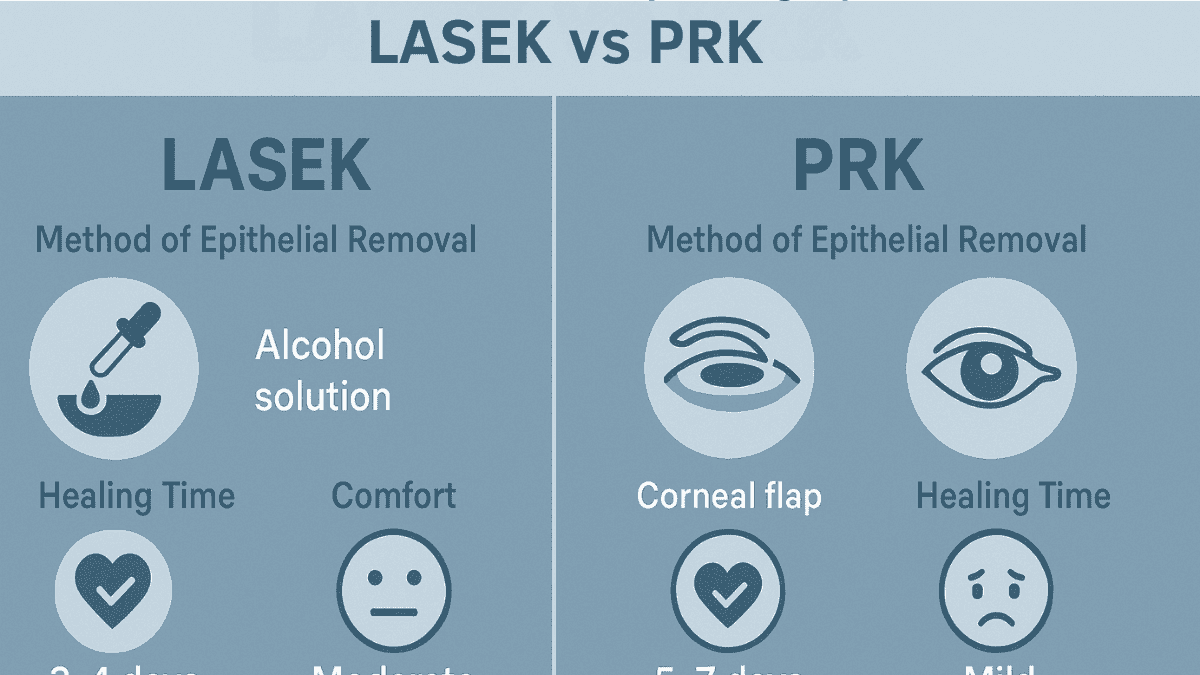
LASEK, which stands for Laser Epithelial Keratomileusis, is another surface ablation procedure quite similar to PRK surgery. The primary difference lies in how the corneal epithelium is managed during the eye surgery procedure. In LASEK, the surgeon loosens this thin outer layer with a special alcohol solution and gently pushes it aside, rather than removing it completely as in PRK.
After the laser has reshaped the cornea to correct the refractive error, this epithelial sheet is carefully repositioned. Some eye surgeons believe this method might aid in the healing process or reduce postoperative discomfort compared to PRK. However, comparative studies often show that recovery times and visual outcomes are very similar between LASEK and photorefractive keratectomy.
LASEK is performed less commonly than either PRK surgery or LASIK eye surgery. It remains an option that your eye surgeon might discuss if it is deemed particularly suitable for your eye’s specific structure and your vision goals. An informed decision requires understanding all available lens options and procedures.
Epi-LASIK
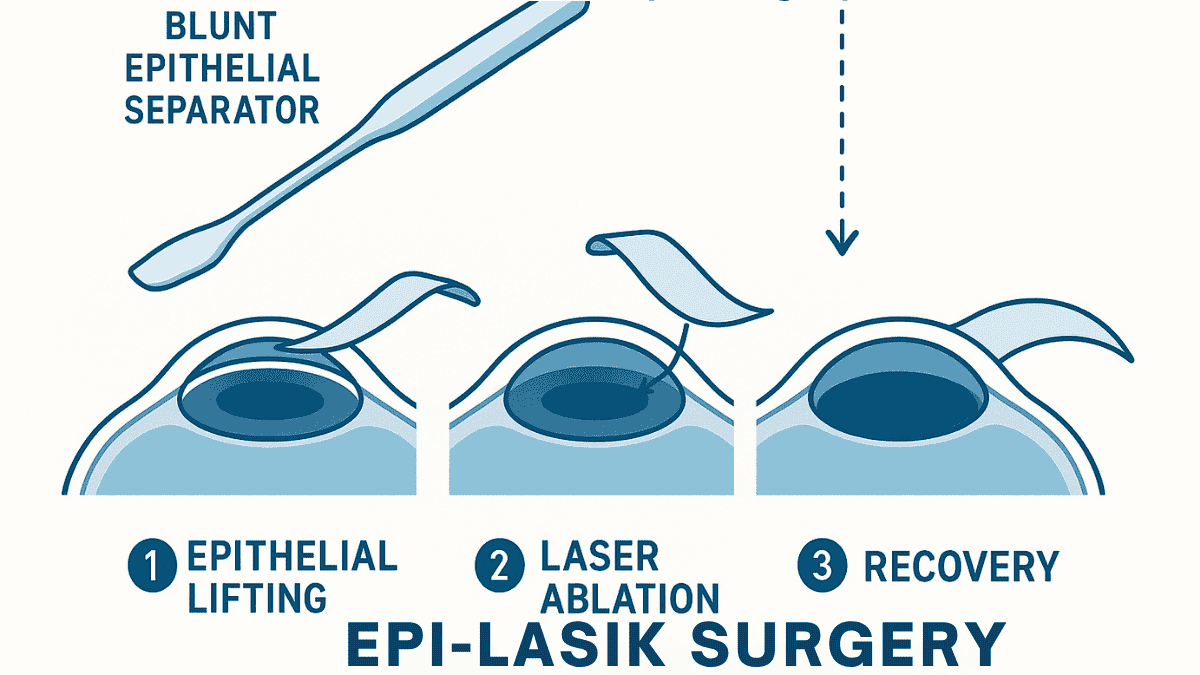
Epi-LASIK is also similar to PRK and LASEK, as it is another surface ablation technique that avoids creating the traditional LASIK flap. In this particular eye surgery procedure, a special blunt, oscillating blade, known as an epithelial separator, is used to create a very thin sheet of epithelium. This epithelial sheet is then lifted, the excimer laser is applied to the underlying corneal tissue to correct vision, and afterward, the sheet is either repositioned or, in some cases, removed entirely, similar to PRK.
The primary aim behind the development of Epi-LASIK was to offer the safety profile associated with PRK surgery while potentially reducing the discomfort experienced during the initial healing phase. Like LASEK, Epi-LASIK is not as widely performed as PRK or LASIK eye surgery. Your eye doctor can provide a comprehensive explanation and determine if this method is a viable vision correction procedure for your specific needs, taking into account factors like your refractive errors and eye health.
Implantable Collamer Lenses (ICL)
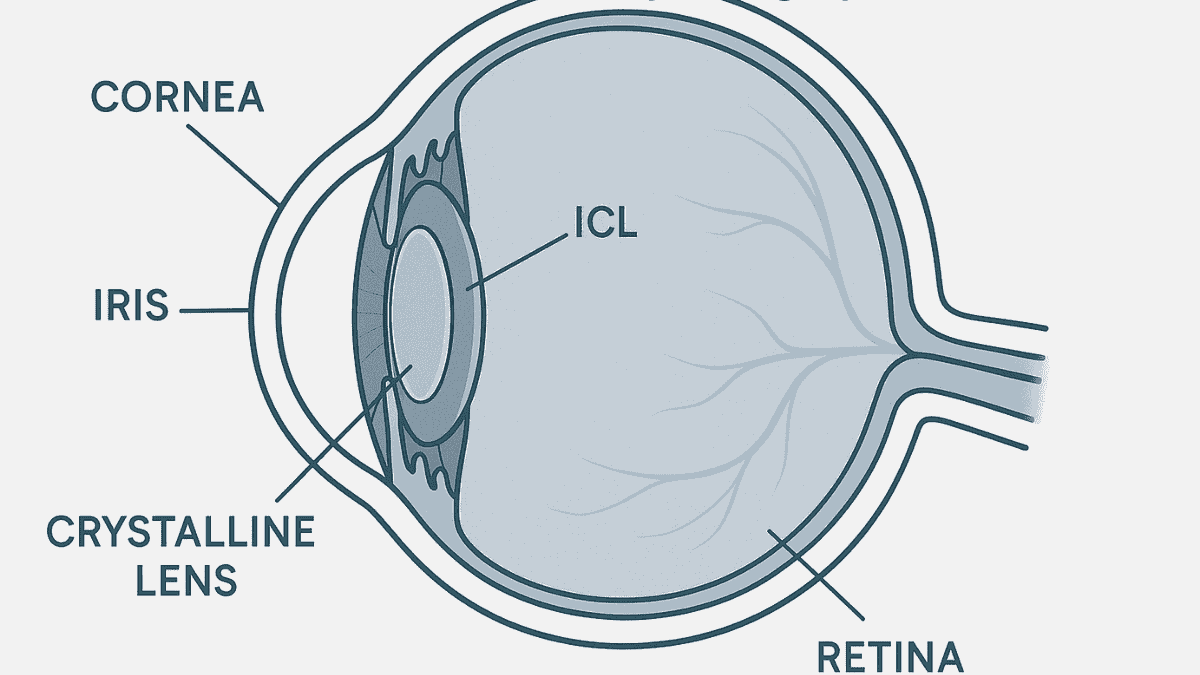
Implantable Collamer Lenses, commonly known as ICLs, represent a fantastic option for vision correction and are a significant LASIK alternative. These are also referred to as phakic intraocular lenses (PIOLs). Unlike laser eye surgery procedures such as LASIK or PRK that reshape your cornea, ICLs function much like contact lenses, but they are surgically placed inside your eye.
The implantable collamer lens is typically positioned between your iris (the colored part of your eye) and your eye’s natural lens, although some models can be placed in front of the iris. ICLs are frequently recommended for individuals with high levels of myopia (nearsightedness), which might be beyond the treatable range for laser vision correction. They are also a suitable choice for patients with thin corneas or those who suffer from chronic dry eye, as the procedure does not typically exacerbate dry eyes.
A major advantage of the implantable collamer lens is that the eye surgery procedure is reversible; if necessary for any reason, including changes in vision or cataract development later in life, the lens implant can be removed. Many ICLs also provide valuable UV protection. The American Academy of Ophthalmology offers good information on these advanced lens options. These implants provide excellent visual outcomes for many.
The ICL surgery involves creating a small incision in the eye to insert the carefully folded lens, which then unfolds into position. While highly effective, it is a more invasive procedure than laser eye surgery. Consequently, there are potential risks including infection, inflammation, an increase in intraocular pressure (which could be a concern for glaucoma treatment), or, rarely, the development of cataracts if the natural lens is touched during implantation.
However, for a good candidate, ICLs can give amazing vision, often very sharp and clear, with a high success rate for suitable candidates. This makes it an important discussion to have with your eye surgeon when considering your vision correction choices, especially if you’re not a good LASIK candidate. Potential complications should be thoroughly discussed.
To compare how this lens-based procedure differs from LASIK, see our full ICL vs LASIK comparison.
Refractive Lens Exchange (RLE)
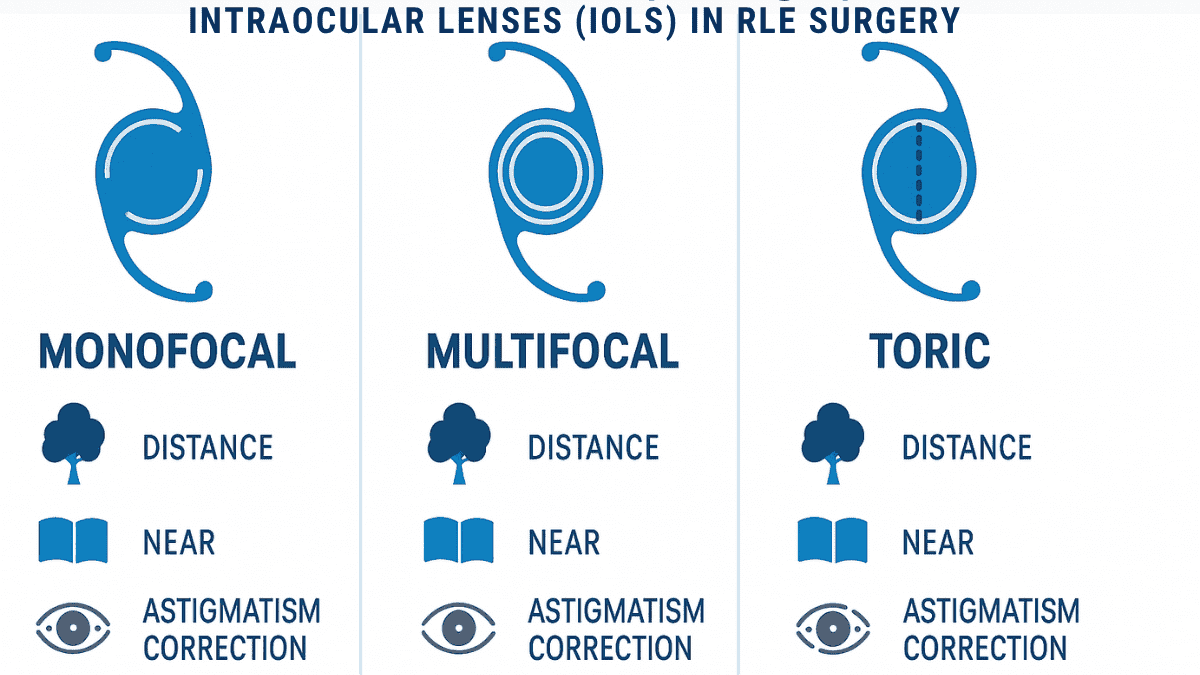
Refractive Lens Exchange, also known by the acronyms RLE or CLE (Clear Lens Exchange), is another intraocular eye surgery procedure. This refractive surgery is very similar in technique to modern cataract surgery. In an RLE procedure, your eye’s natural crystalline lens is surgically removed and then replaced with an artificial intraocular lens (IOL), which is a type of lens implant.
This new refractive lens is selected to precisely correct your specific refractive error, such as nearsightedness, farsightedness, or astigmatism. RLE, sometimes referred to as RLE RLE for emphasis on the lens exchange aspect, is often a good choice for individuals typically over the age of 40 or 50. This is particularly true for those experiencing presbyopia, the age-related decline in near vision that leads to the need for reading glasses.
A significant advantage of clear lens exchange is its ability to correct presbyopia, often reducing or eliminating the need for reading glasses. Furthermore, since the eye’s natural lens is removed during the procedure, you will not develop cataracts in that eye later in life. The American Academy of Ophthalmology has more resources on refractive lens exchange.
Various types of IOLs can be utilized in RLE surgery, offering different visual outcomes; different IOLs correct different aspects of vision. Monofocal IOLs provide clear single-distance vision, usually for distance, meaning reading glasses will still be needed for near tasks. Multifocal or extended depth-of-focus (EDOF) IOLs can provide a broader range of vision, potentially reducing dependence on glasses for both distance and near.
Toric IOLs correct astigmatism effectively, as toric IOLs correct this common refractive error by their specific design. Implants provide long-term vision correction. RLE is a more invasive procedure compared to laser vision correction options and carries risks similar to those of cataract surgery, such as infection, inflammation, retinal detachment, or vision disturbances. When performed on appropriate candidates by an experienced surgeon, RLE RLE procedures demonstrate high success in achieving vision goals. Your eye doctor will help you carefully weigh the pros and cons, considering your vision goals and overall eye health to make an informed decision.
Here is a table summarizing these surgical options:
| Procedure | Good For | Pros | Cons |
| PRK | Thin corneas, active individuals | No flap, stable | Longer recovery, initial discomfort |
| ICL | High myopia, thin corneas, dry eye | Reversible, UV protection, good for dry eyes | More invasive, surgical risks |
| RLE | Over 40/50, presbyopia, high hyperopia | Corrects presbyopia, prevents cataracts | More invasive, risks of intraocular surgery |
Choosing a surgical alternative involves careful thought and discussion with your eye doctor. Make sure you understand each correction procedure well. Your doctor will be your best guide in making an informed decision.
Not sure if you’re a good candidate for LASIK? Take our quick LASIK eligibility test to get clarity before exploring alternatives.
Wondering how LASIK works for farsightedness before considering alternatives? Read real LASIK outcomes for farsightedness to get patient-based insights.
Exploring Non-Surgical Vision Correction Options
Maybe surgery isn’t what you are looking for right now. That is perfectly fine. There are excellent non-surgical ways to see better.
These are often the first methods people use to correct their vision. They offer flexibility and are generally very safe when used correctly for good eye care.
Glasses (Spectacles)
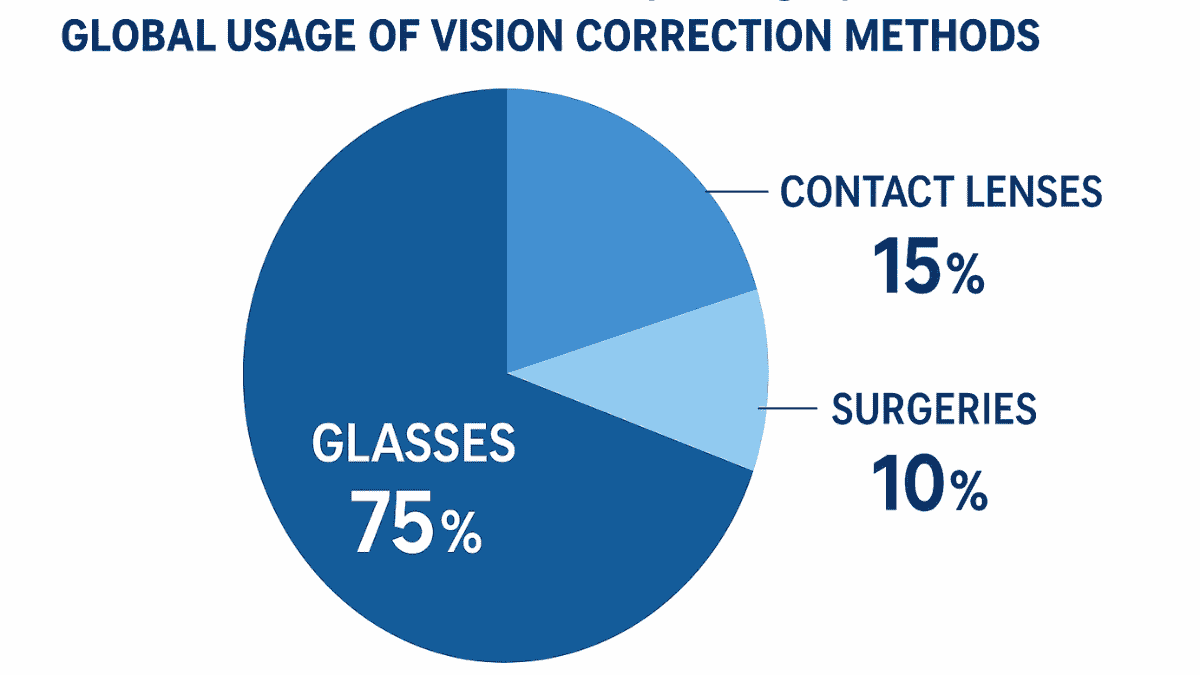
Glasses, also known as spectacles, are the oldest and most prevalent method for vision correction. They are a simple, generally effective, and non-invasive way to improve eyesight. Today’s glasses are available in an almost limitless array of styles, materials, and lens types, allowing individuals to find frames that complement their facial features and personal style.
Lens technology itself has also seen substantial advancements, offering thinner, lighter, and more durable options with various coatings for enhanced performance and eye health. The primary advantage of glasses is their inherent safety and ease of use; there’s no direct contact with the eye, minimizing infection risks. They can correct nearly all types of refractive errors, including myopia (nearsightedness), hyperopia (farsightedness), astigmatism, and presbyopia (age-related near vision loss).
Updating your prescription is a straightforward process following an eye exam. Furthermore, specialty lenses are widely available, such as blue light filtering lenses for individuals who spend significant time on digital devices, or photochromic lenses that darken in sunlight. Progressive lenses are a popular choice for those with presbyopia, offering correction for multiple distances without the visible lines found in traditional bifocals.
Of course, glasses do present some drawbacks for certain individuals. They can be perceived as inconvenient for sports or other vigorous physical activities. Glasses may fog up in humid conditions or when moving between different temperature environments, and some people feel they significantly alter their appearance or can be uncomfortable, especially with improper fitting.
However, for many, glasses remain a dependable, fashionable, and practical choice for achieving clear vision and maintaining good eye care. They are a fundamental part of vision correction for millions. Consider them a primary LASIK alternative.
Contact Lenses
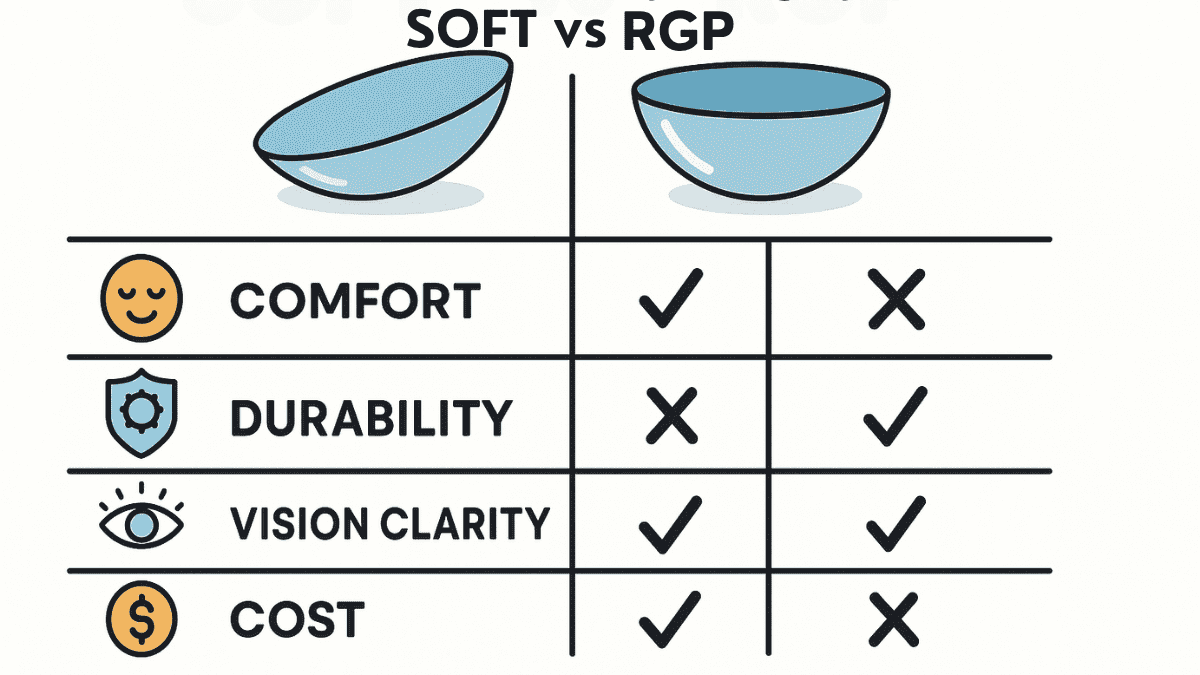
Contact lenses are another exceedingly popular non-surgical choice for vision correction, used by millions worldwide. They sit directly on the surface of your eye, specifically on the tear film covering the cornea. This direct placement provides a wider field of vision compared to glasses, without frame obstruction, and for many users, contact lenses feel more natural and less obtrusive.
They are particularly advantageous for sports and active lifestyles where glasses might be cumbersome or pose a safety risk. There is a wide variety of contact lenses available to suit different needs and preferences. You can learn more about the basics from the American Academy of Ophthalmology.
Contact lens options include soft contact lenses and rigid gas permeable (RGP) lenses. Soft lenses are the most common type and are made from flexible plastics combined with water; they come in various replacement schedules, including daily disposables, bi-weekly, or monthly options. RGP lenses, sometimes called hard contacts, are more durable and can provide very crisp, clear vision, especially for certain complex prescriptions or corneal irregularities.
There are also specialized toric lenses designed to correct astigmatism, and multifocal contact lenses available for individuals with presbyopia, allowing for clear vision at multiple distances. Some contact lenses also offer UV protection, which is beneficial for overall eye health. Proper hygiene and careful handling are critical when using contact lenses to prevent potentially serious eye infections or corneal complications like corneal ulcers.
Some individuals may initially find them challenging to insert or remove, though this typically improves with practice. Contact lenses can sometimes cause or worsen symptoms of dry eye, especially in dry environments or with prolonged wear. Additionally, there is an ongoing cost associated with purchasing lenses and necessary care solutions.
However, with diligent care, regular eye exams from an eye doctor, and adherence to wearing schedules, contact lenses are a safe and highly effective vision correction option for a vast number of people seeking freedom from glasses. They represent a key non-surgical LASIK alternative.
Orthokeratology (Ortho-K)
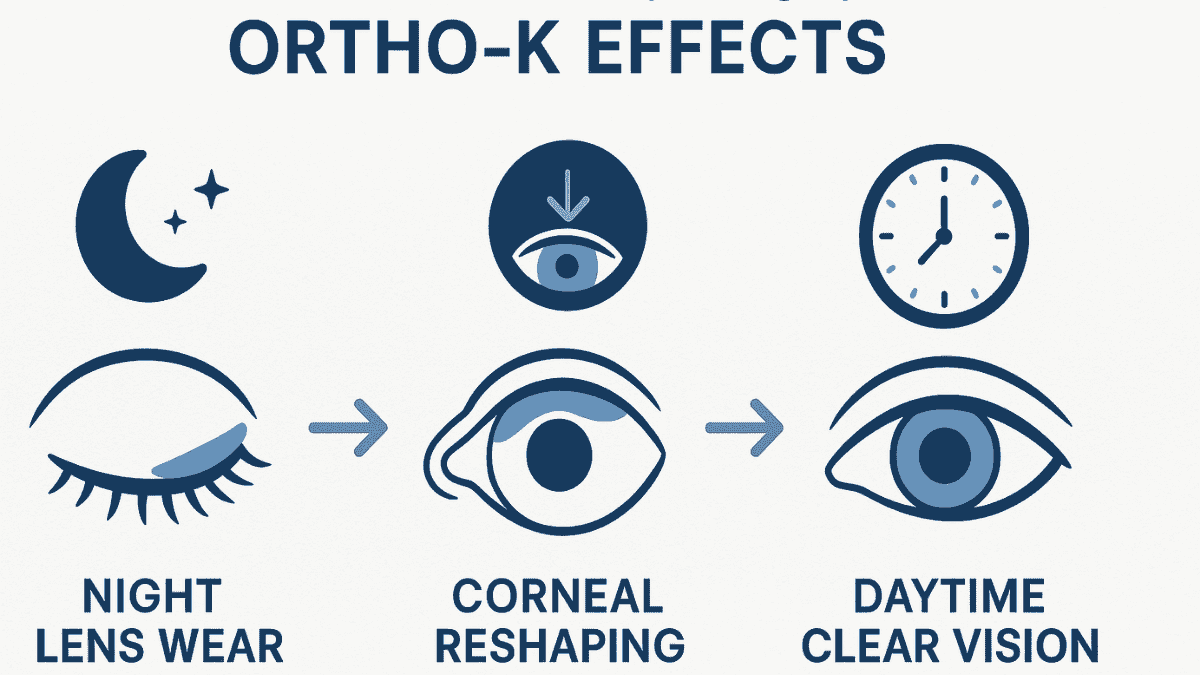
Orthokeratology, often shortened to Ortho-K, is a fascinating and specialized non-surgical vision correction option. This method involves wearing custom-designed rigid gas permeable (RGP) contact lenses. These Ortho-K lenses are worn overnight, while you sleep.
During these hours of wear, the lenses gently and temporarily reshape the cornea, the front surface of your eye. Upon waking and removing the lenses, individuals typically experience clear vision throughout the day. This means no need for daytime glasses or other contact lenses.
Ortho-K is primarily used to correct mild to moderate myopia (nearsightedness) and can also be effective for correcting some degrees of astigmatism. It has gained recognition as a valuable option for children, as studies suggest it can help slow down the progression of myopia, which is a growing concern for eye health globally. Ortho-K is also a good alternative for adults who desire freedom from corrective eyewear during their waking hours.
This is especially true for those who participate in water sports, work in dusty or windy environments where contact lens wear can be problematic, or simply prefer not to wear glasses or daytime contacts. The American Academy of Ophthalmology has detailed information regarding Ortho-K treatments and their applications. These special contact lenses offer a unique approach to managing refractive errors.
The vision correcting effect of Ortho-K is temporary and completely reversible. If you stop wearing the specialized lenses regularly, your cornea will gradually return to its original shape. Your vision will revert to its pre-treatment state.
Consistent nightly wear, or adherence to the schedule prescribed by your eye doctor, is necessary to maintain clear daytime vision. As with all types of contact lenses, meticulous hygiene is critical to prevent eye infections. Ortho-K requires a specialized fitting process by an experienced eye care professional and often has a higher initial cost compared to standard contact lenses, but for suitable candidates, it offers a unique way to manage refractive errors without daytime eyewear or surgery.
Making the Right Choice: Factors to Discuss with Your Eye Doctor
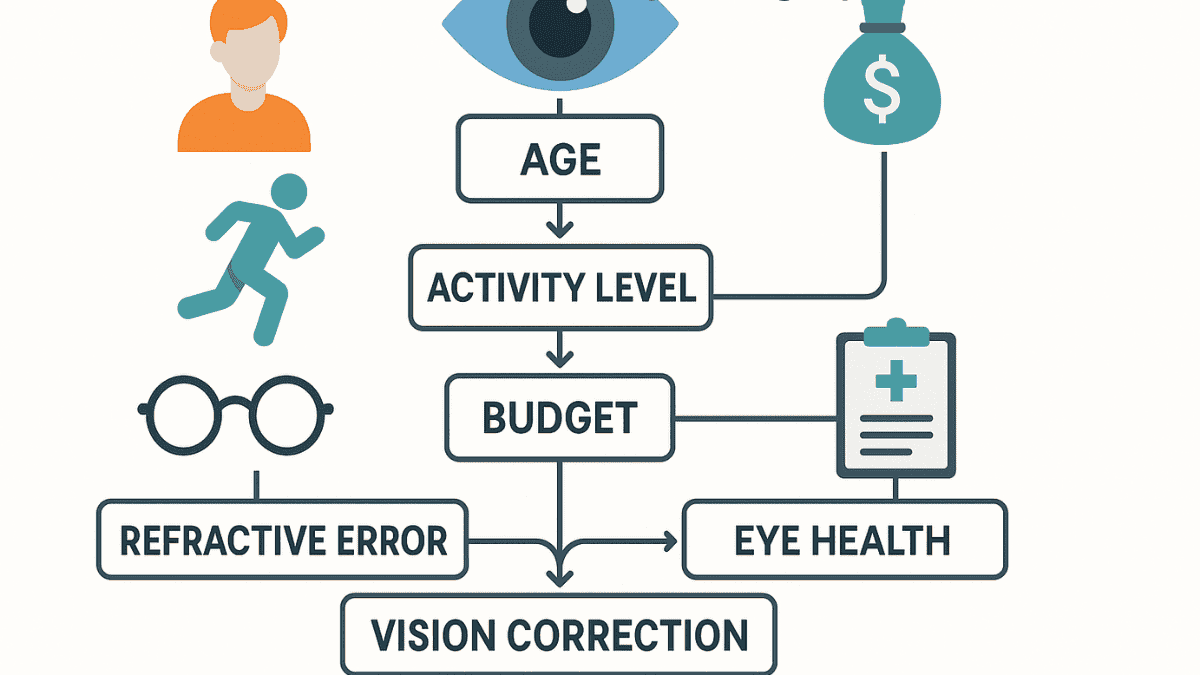
Choosing the most suitable method to correct your vision is a significant decision that can greatly impact your quality of life. There is no single “best” option that applies universally to everyone, as individual needs and eye conditions vary widely. The right choice for you depends on a multitude of factors, making a thorough eye exam and consultation with a qualified eye doctor or ophthalmologist from a reputable eye institute absolutely essential.
During this examination, your eye care professional will assess your current vision, measure your refractive error, and evaluate your overall eye health. They will look for any conditions like dry eyes or early signs of cataract development or glaucoma treatment needs that might influence your options. Systemic health conditions, such as poorly controlled diabetic eye disease, can also significantly impact candidacy for various eye surgeries and necessitate a very careful evaluation by your eye doctor and possibly your primary care physician before proceeding with any elective vision correction procedure.
Reflect carefully on your lifestyle. Are you very active, participating in sports or outdoor activities frequently? Do you spend many hours working at a computer, which might contribute to dry eye symptoms? What are your hobbies and daily routines?
These details are important considerations. Also, clearly define your vision goals. Are you aiming for perfect 20/20 vision, or would you be satisfied with significantly improved vision that reduces your dependence on corrective lenses for most daily tasks?
Being realistic about what each vision correction procedure or option can achieve is crucial for satisfaction. Budget is another practical factor to consider for any eye surgery or vision correction method. Some procedures, like refractive lens exchange or ICL implantation, have a higher upfront cost.
Other options, such as contact lenses or Ortho-K, involve ongoing expenses for supplies and follow-up care. Discuss all associated costs openly with your eye doctor, including any financing plans that might be available through their patient portal or office. Ask detailed questions about all potential risks including long-term complications and benefits associated with each recommended option; every medical procedure, whether surgical like PRK surgery or non-surgical like wearing glasses, has them.
Do not feel pressured into making a quick choice; a well-informed decision takes time. Your eye doctor is your partner in this process. They are dedicated to helping you find the path that best suits your eyes, your lifestyle, and helps you achieve your desired vision outcome.
Conclusion
If LASIK eye surgery isn’t suitable for your eyes, there’s no need for discouragement. From advanced surgical procedures like PRK and ICL to flexible non-surgical options such as glasses, contact lenses, and Ortho-K, a wide range of vision correction methods are available today.
Each option comes with its own considerations—from safety and effectiveness to lifestyle compatibility and cost. That’s why discussing these choices with a qualified eye care professional is essential.
At LasikSurgery.info, our role is to equip you with trustworthy, up-to-date information—not to replace medical advice. We encourage you to use this guide as a foundation for further conversation with your eye doctor, tailored to your specific vision needs and health profile.
FAQ
LASIK surgery isn’t suitable for everyone due to factors like thin corneas, irregular corneal shapes, severe dry eye syndrome, or very high refractive errors. Individuals with autoimmune diseases or unstable vision prescriptions may also be disqualified. A thorough pre-operative screening is essential to determine eligibility.
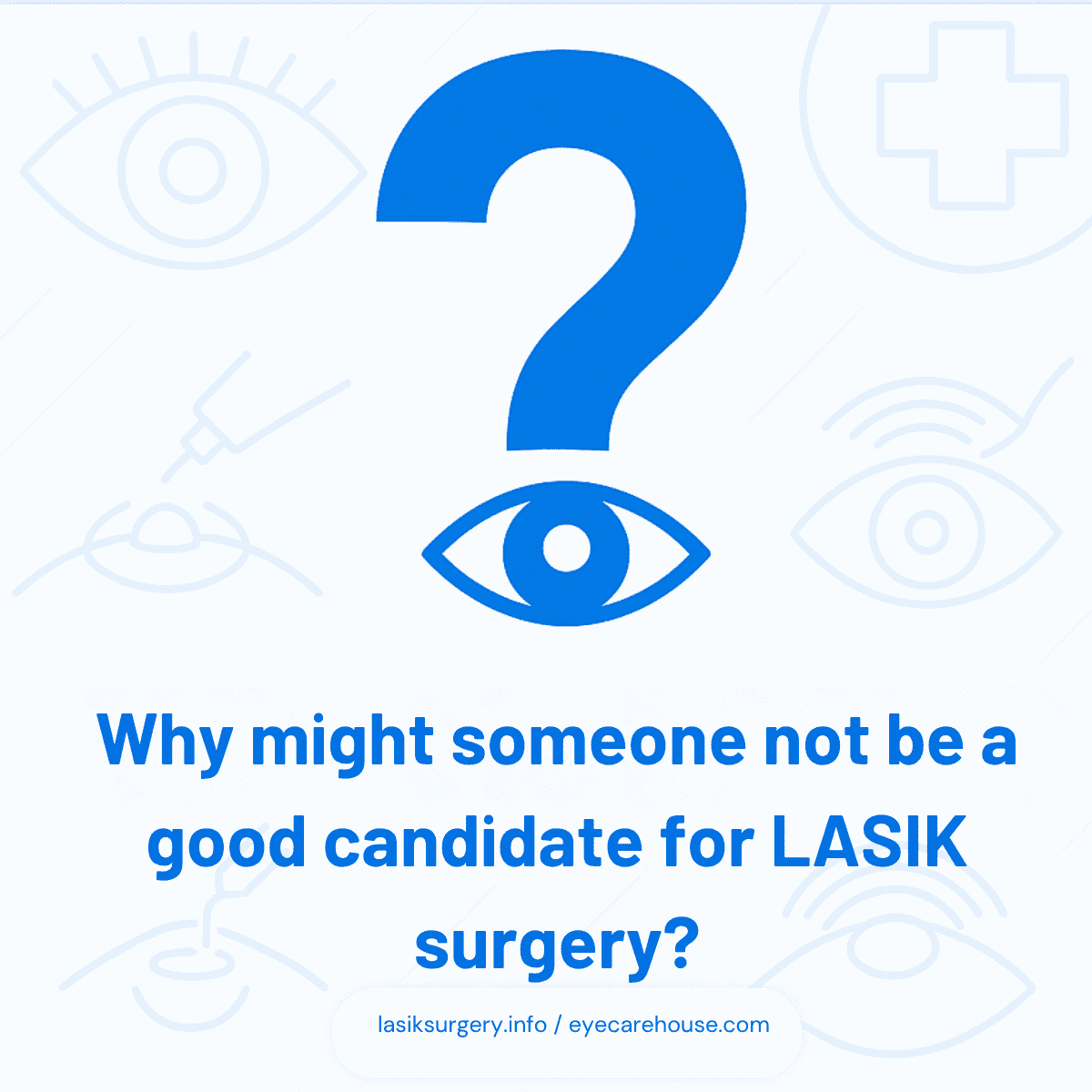
Yes, PRK is often preferred for individuals with thin corneas because it does not require the creation of a corneal flap, which is essential in LASIK. This makes PRK a safer alternative for patients whose corneal thickness is insufficient for LASIK.
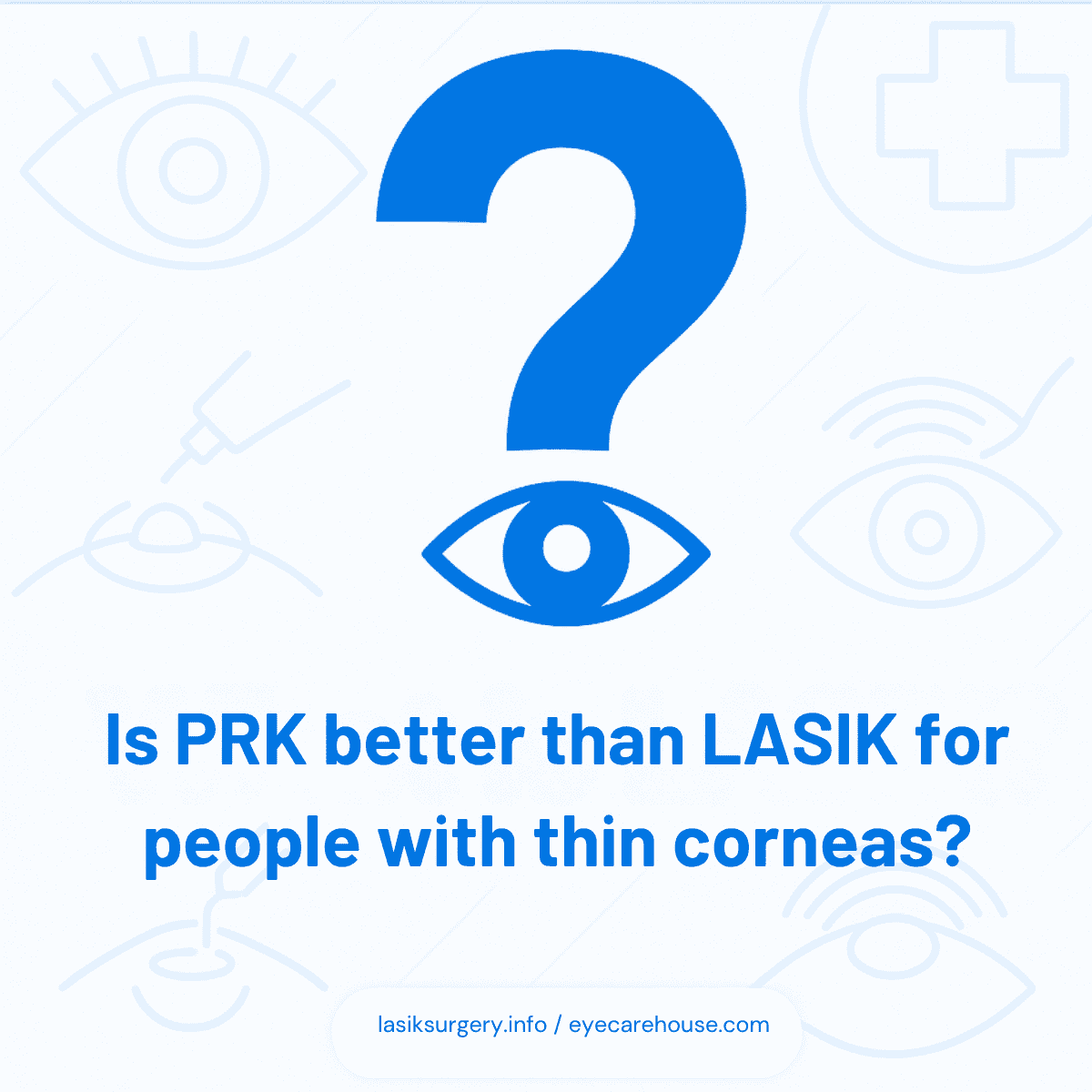
Visual recovery after PRK usually takes longer than LASIK. Most patients experience functional vision within 5 to 7 days, but it can take several weeks to months for complete clarity to stabilize. Mild discomfort and sensitivity are common during the initial healing phase.
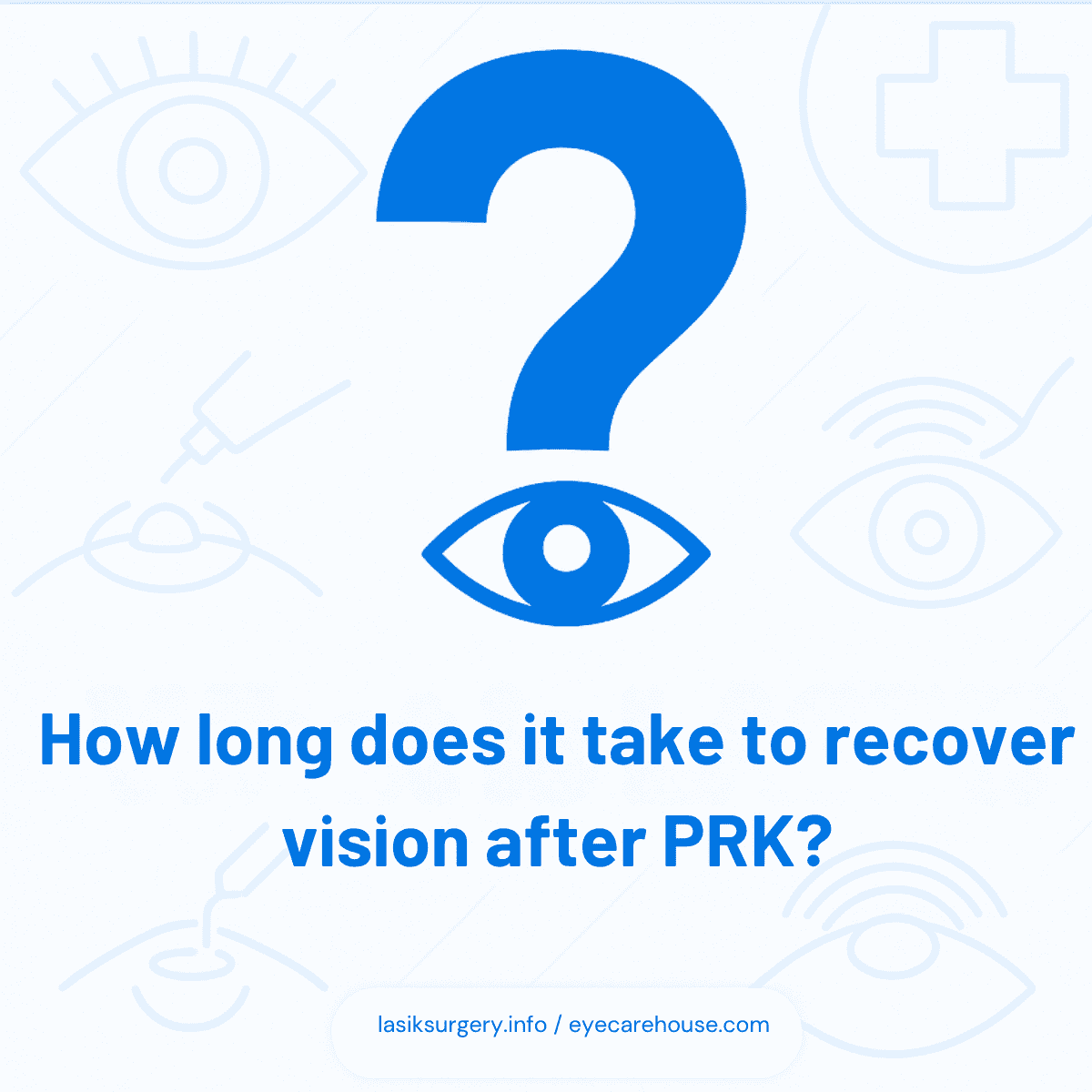
The main difference lies in how the corneal epithelium is managed. PRK removes the epithelial layer entirely, while LASEK preserves and repositions it after laser reshaping. Both procedures target the same corneal tissue but vary slightly in healing dynamics and technique.
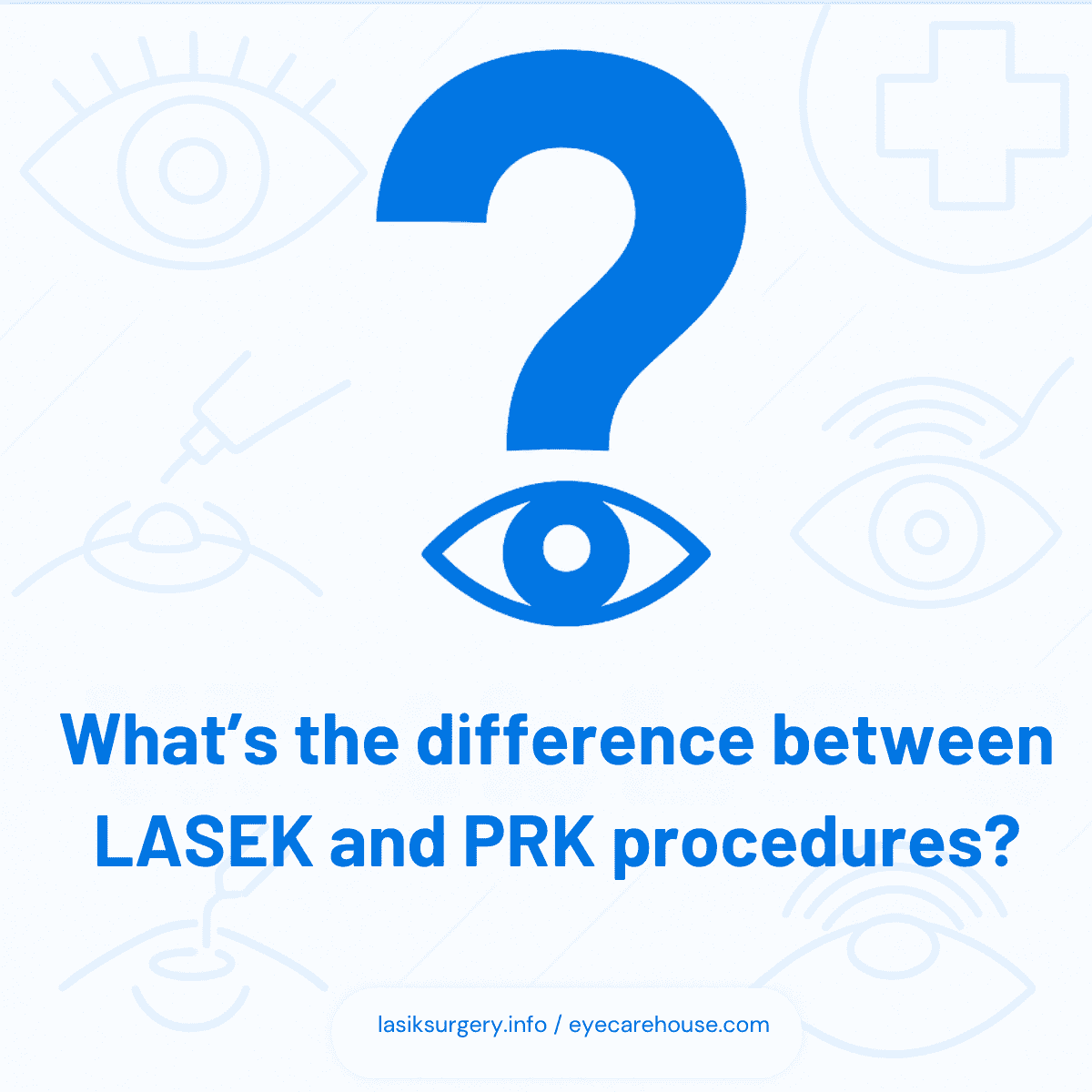
Epi-LASIK was developed to offer PRK-level safety with potentially less discomfort. It uses a mechanical separator instead of alcohol to lift the epithelium, which may reduce inflammation and post-operative pain for some patients, although outcomes vary individually.
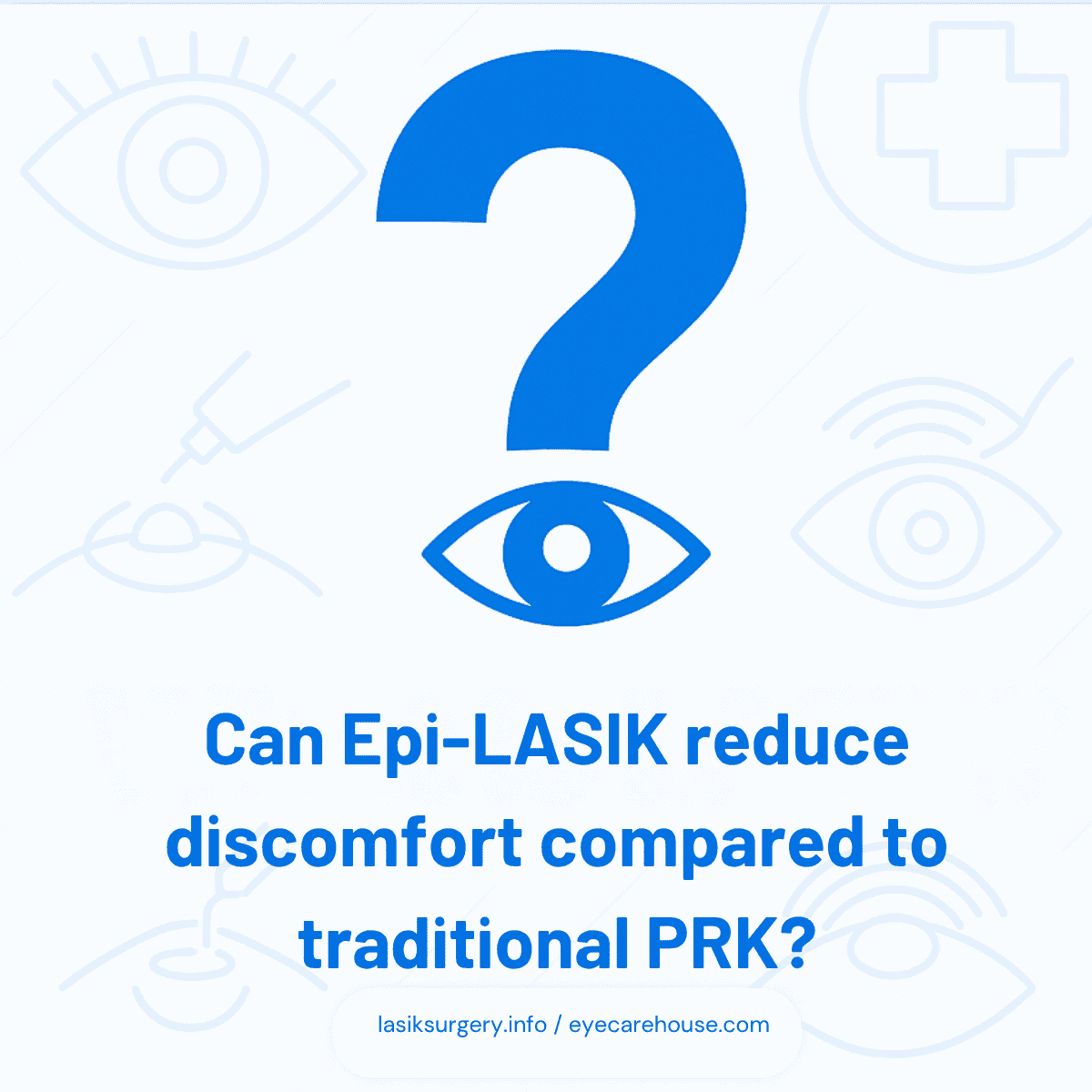
ICLs are surgically placed between the iris and the natural lens to correct vision without reshaping the cornea. They act like permanent internal contact lenses and are especially effective for high myopia or patients with contraindications for corneal laser surgery.
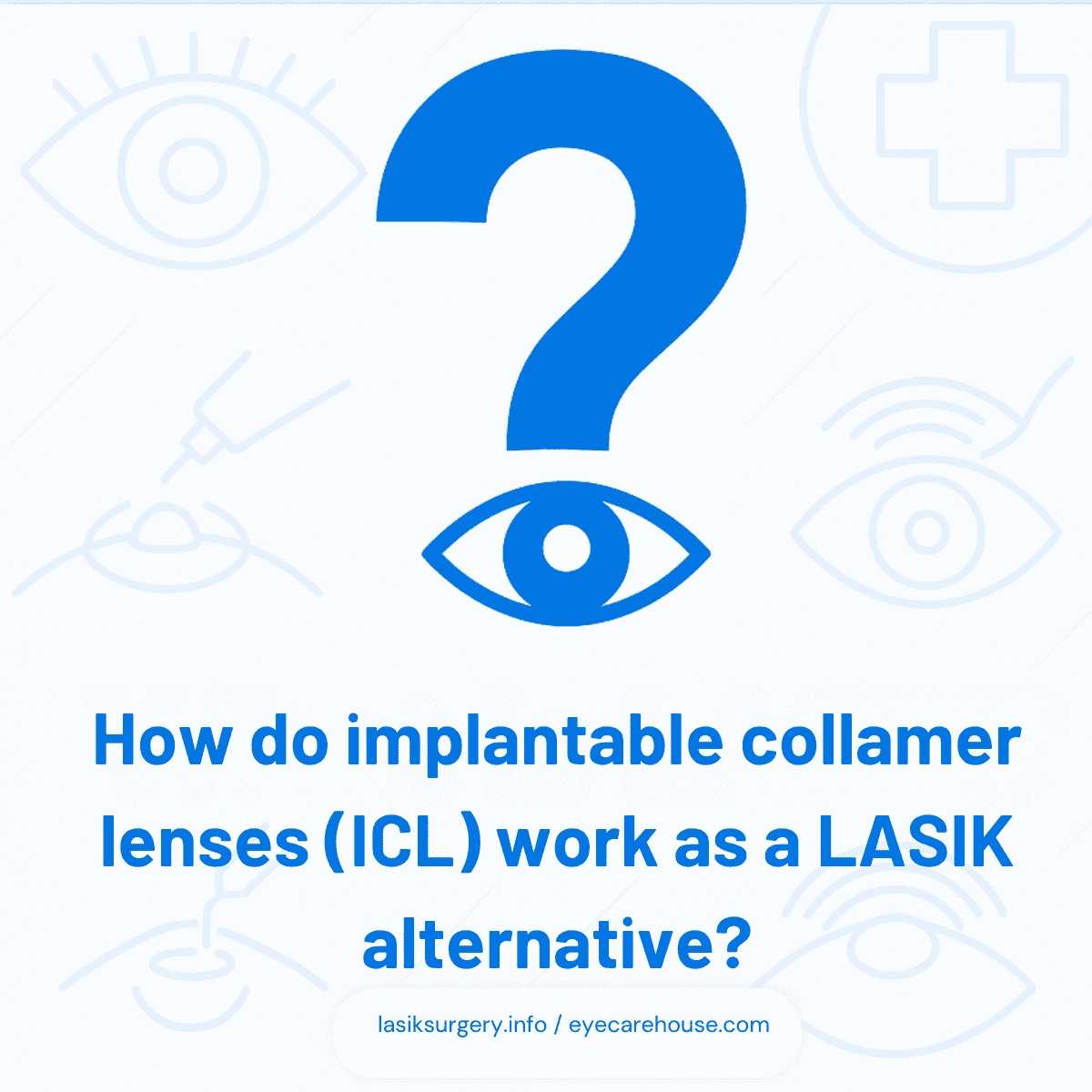
Yes, one of the advantages of ICLs is reversibility. If vision needs change or complications arise, the lens can be safely removed or replaced by an eye surgeon, making it a flexible long-term solution for many patients.
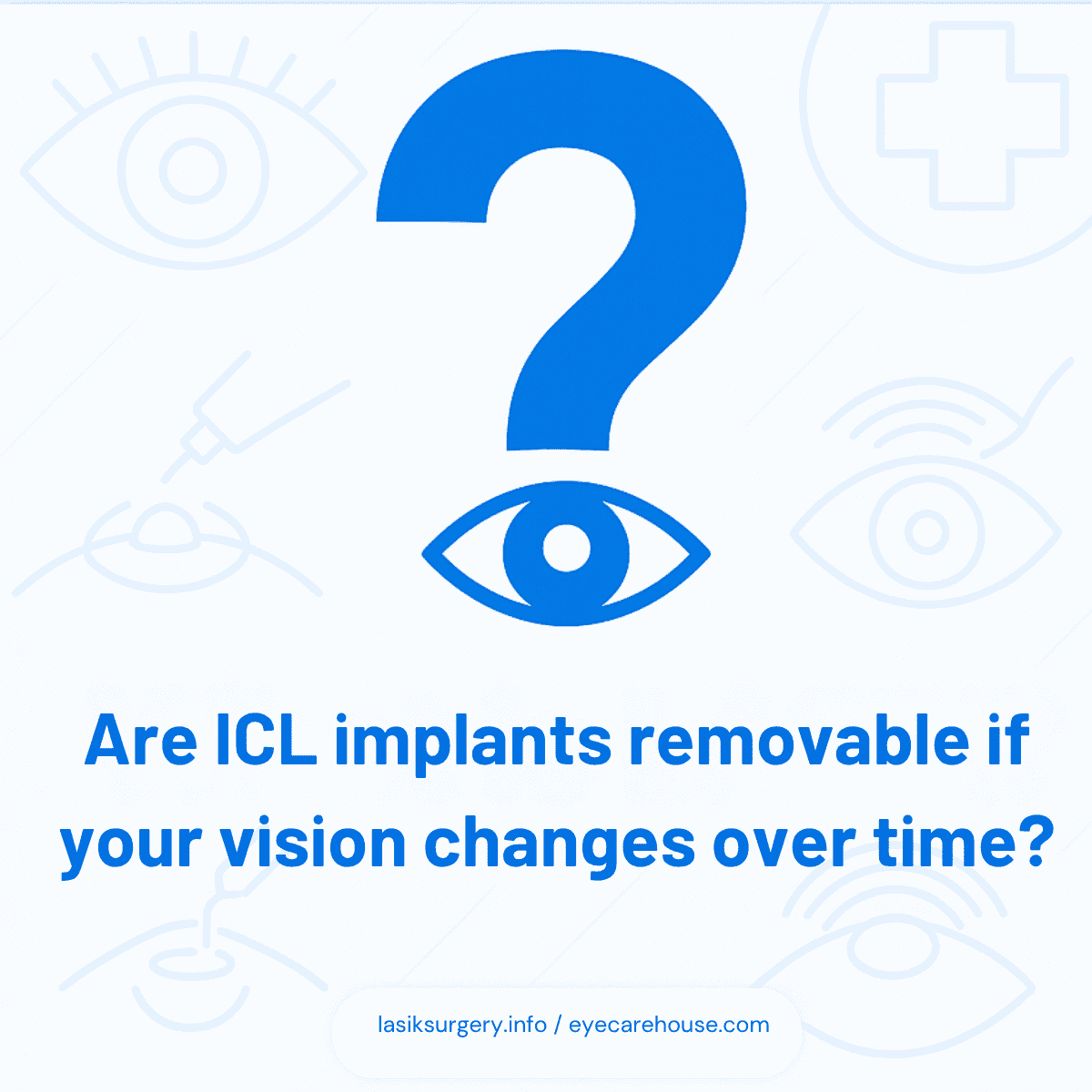
RLE involves replacing the eye’s natural lens with an artificial intraocular lens (IOL), similar to cataract surgery. It’s typically recommended for adults over 40–50 with presbyopia or high hyperopia who want to reduce or eliminate dependency on reading glasses.
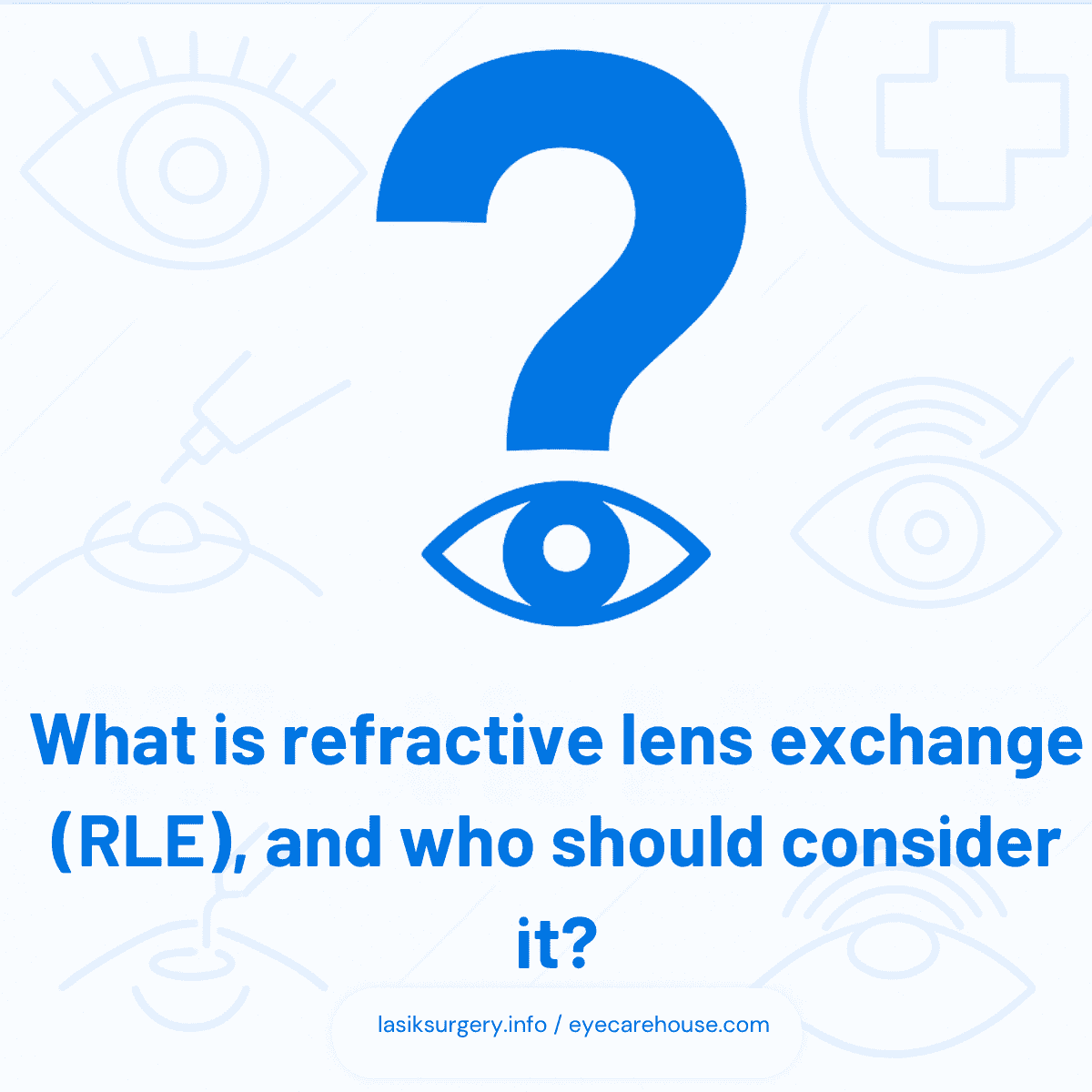
Yes. Since RLE removes the natural lens, the eye can no longer develop a cataract. This makes RLE both a refractive correction procedure and a preventive measure for age-related cataract formation.
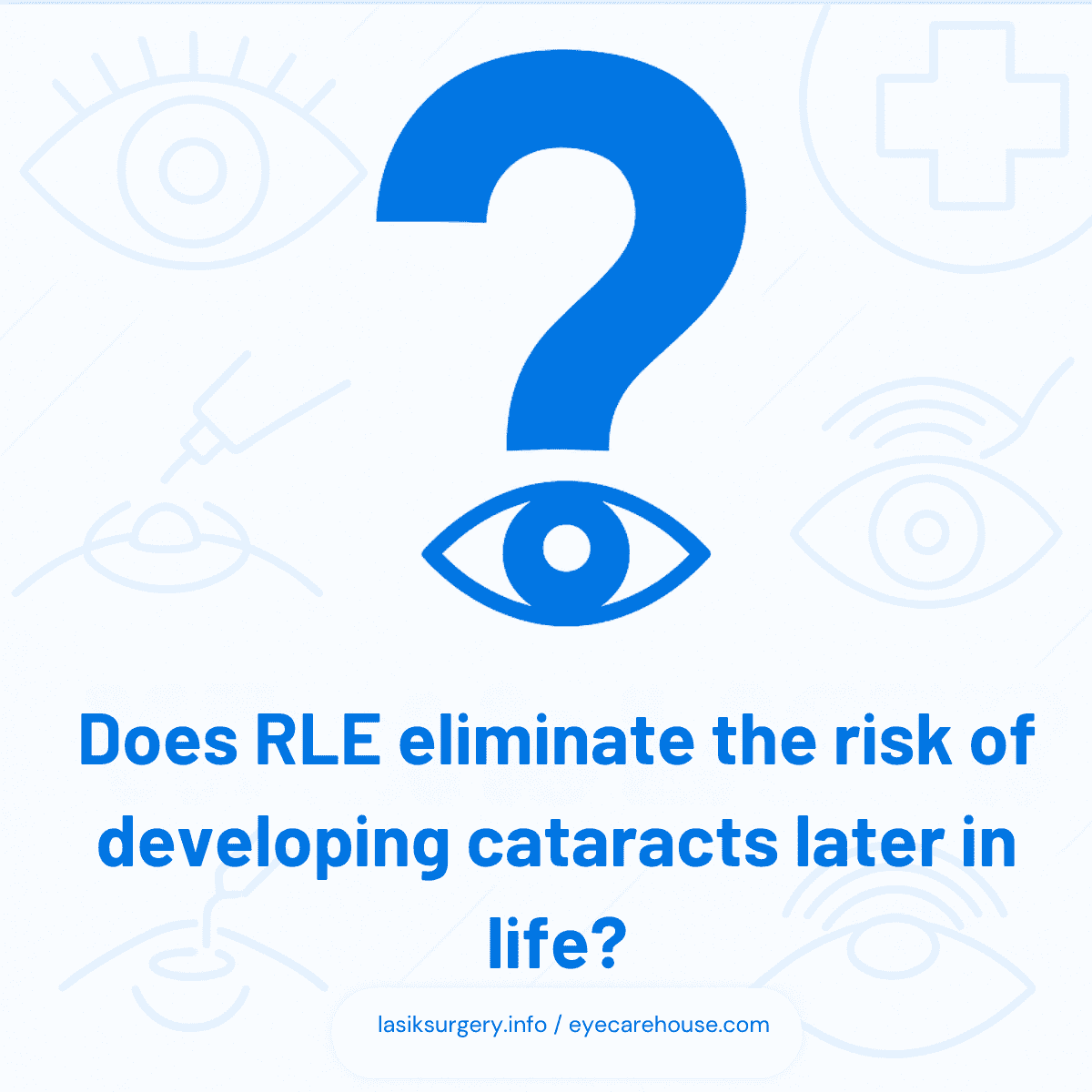
Glasses are non-invasive, low-risk, and easily adjustable. They’re ideal for nearly all refractive errors. However, they can fog, break, or cause discomfort during physical activities. Some users also find them aesthetically limiting or inconvenient for sports or weather changes.
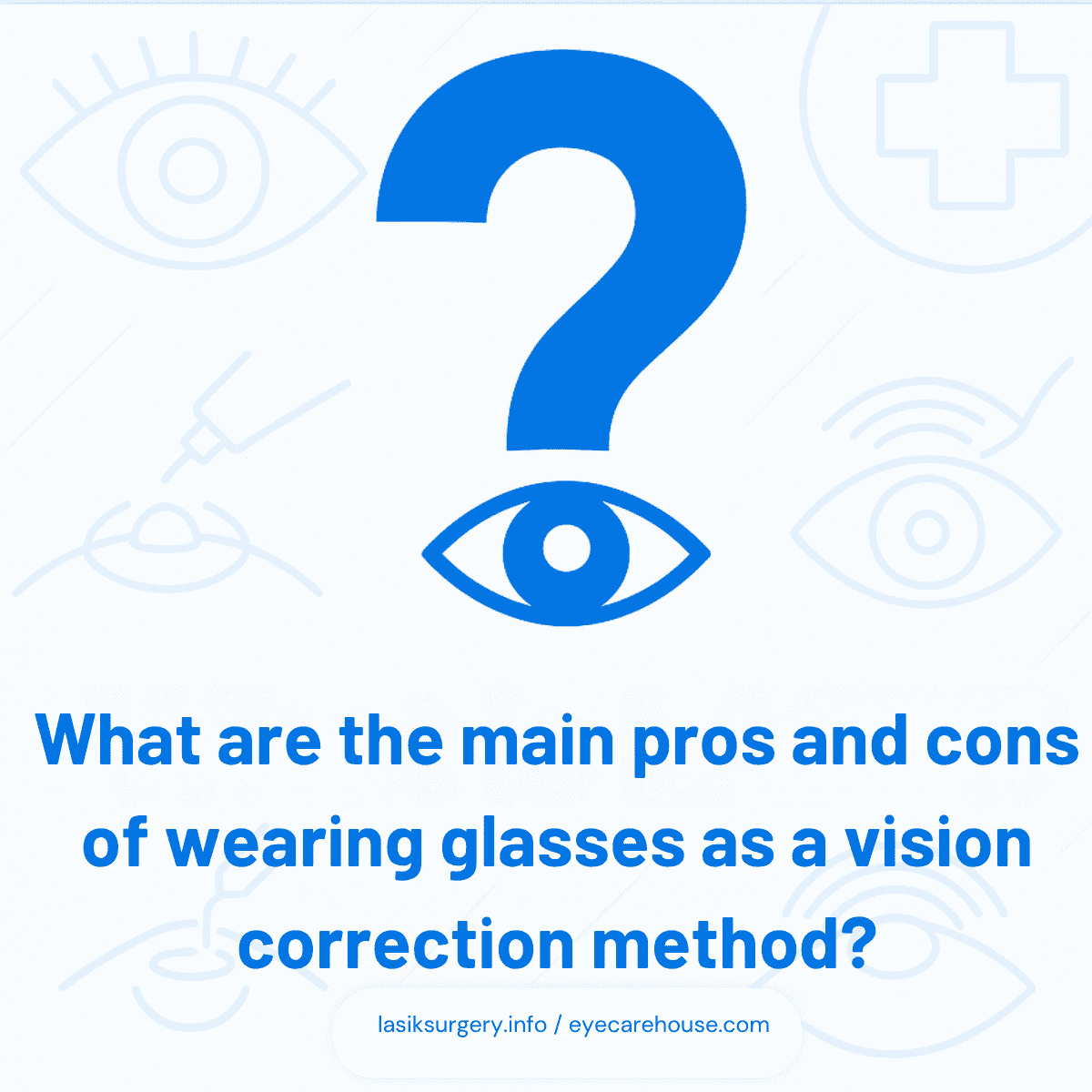
Contact lenses offer a wider field of view and can be tailored to various vision needs, including astigmatism and presbyopia. They’re a valid long-term alternative, but they require diligent hygiene and regular replacements to avoid infection or corneal complications.
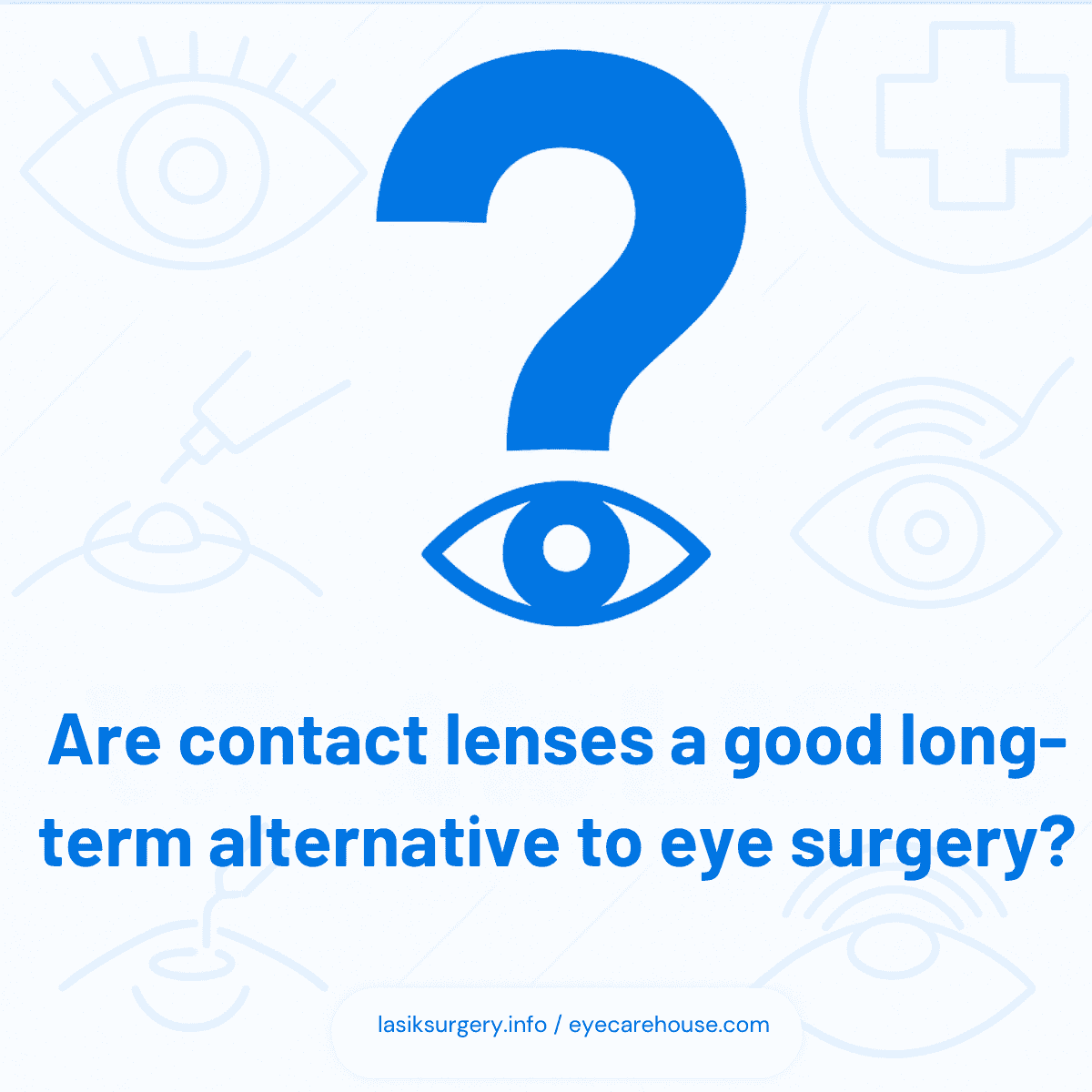
Ortho-K lenses gently mold the cornea while you sleep, temporarily changing its curvature to correct myopia or mild astigmatism. This reshaping allows clear daytime vision without the need for glasses or contacts, but the effect fades if lenses aren’t worn consistently.
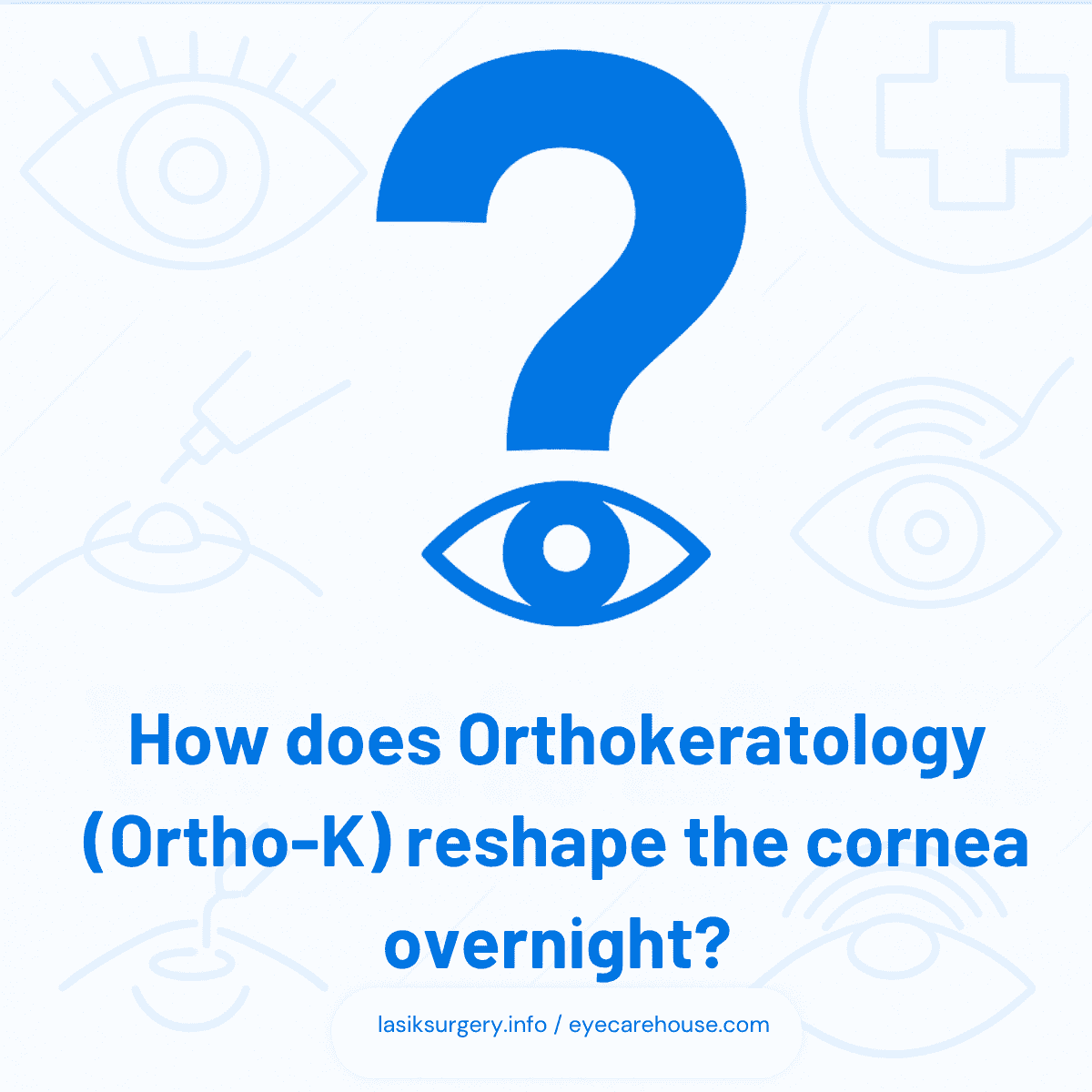
Yes, several studies suggest that Ortho-K lenses can reduce the rate of myopia progression in children by controlling axial elongation of the eye. This makes it a popular choice among parents seeking non-surgical intervention for early-onset myopia.
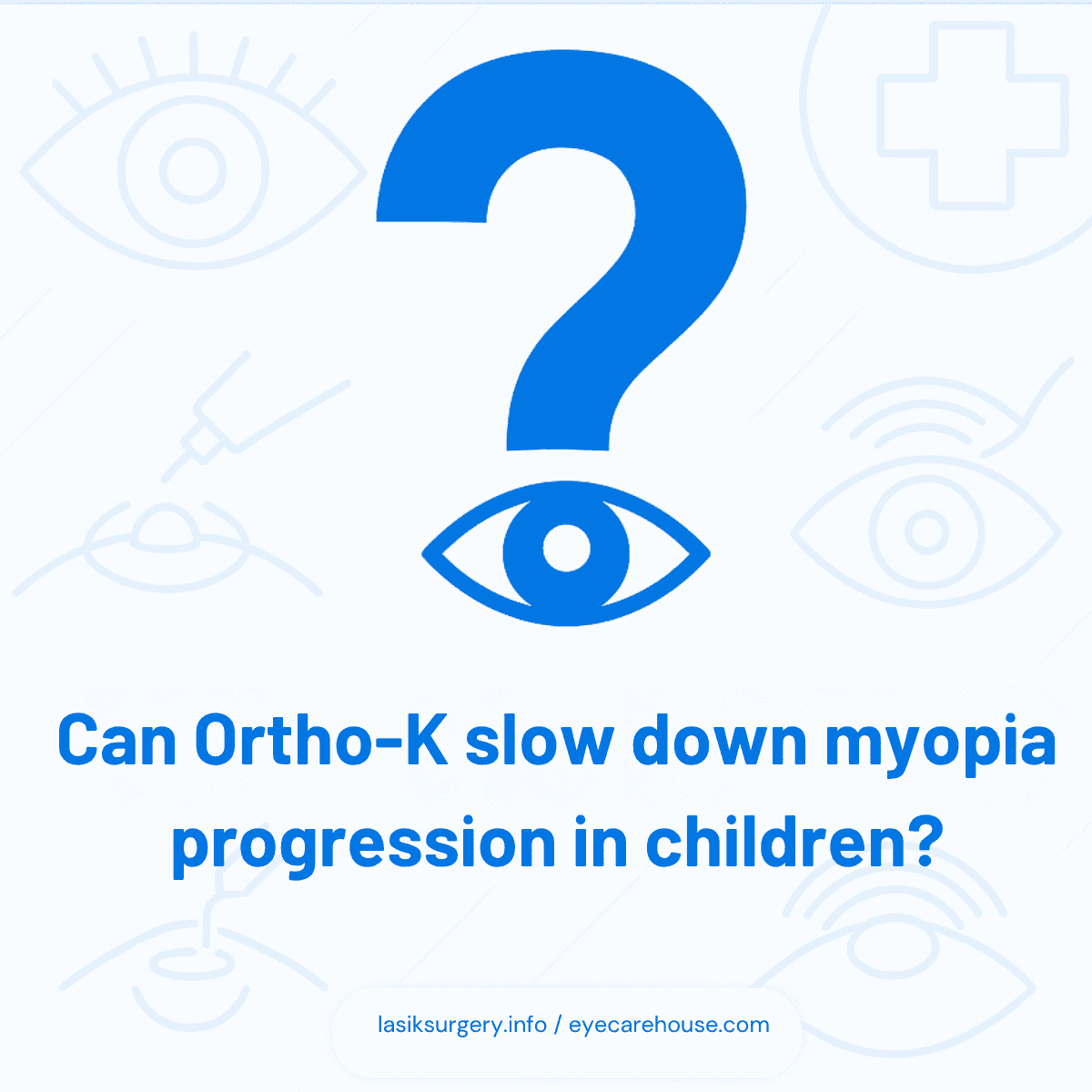
While LASIK often has a lower upfront cost, alternatives like ICL and RLE can be more expensive due to surgical complexity and implant costs. However, long-term value depends on the patient’s needs, future vision changes, and whether retreatment is required.
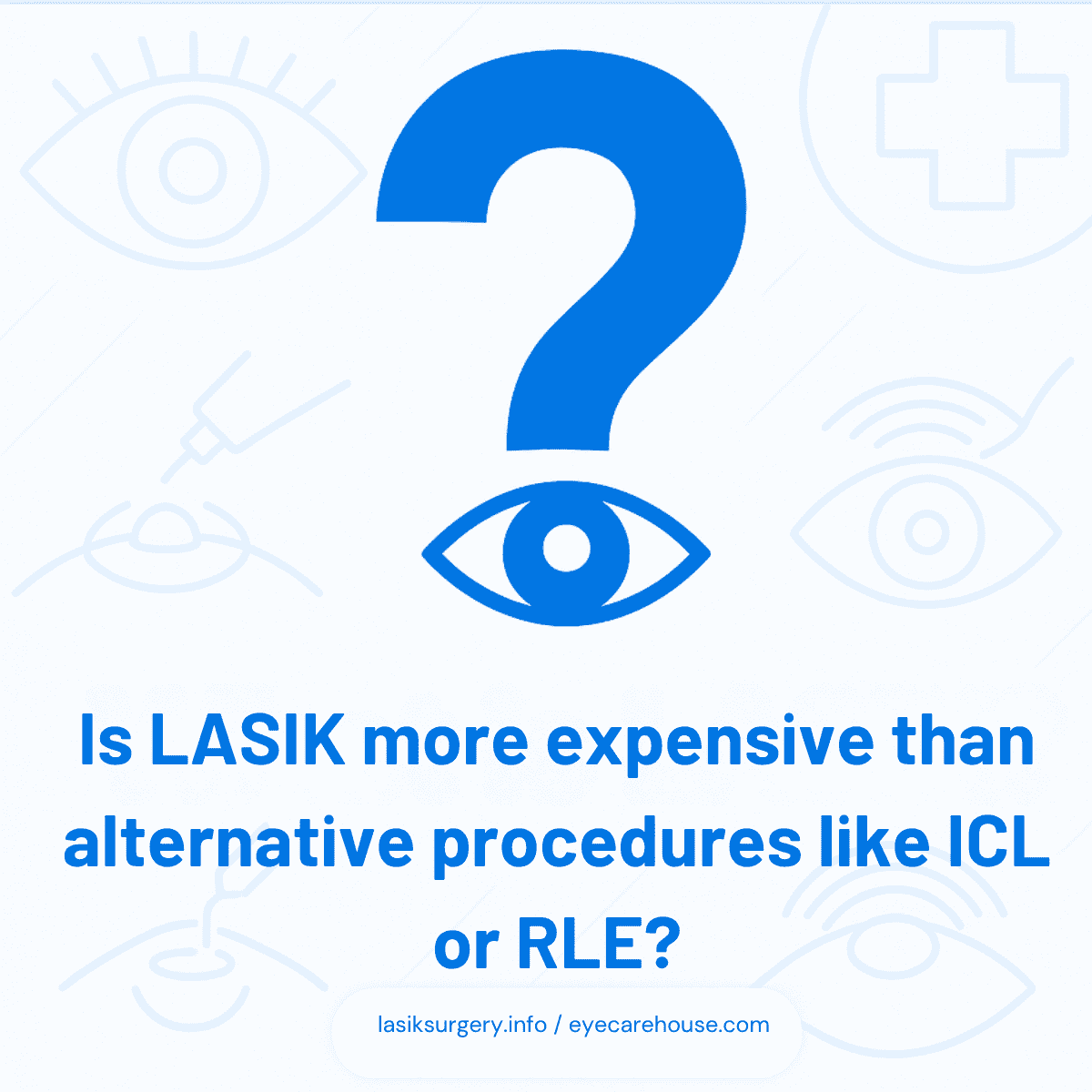
The best choice depends on your corneal health, prescription strength, lifestyle, and long-term vision goals. A comprehensive eye exam and discussion with a licensed ophthalmologist are essential for determining the most suitable procedure tailored to your specific needs.
